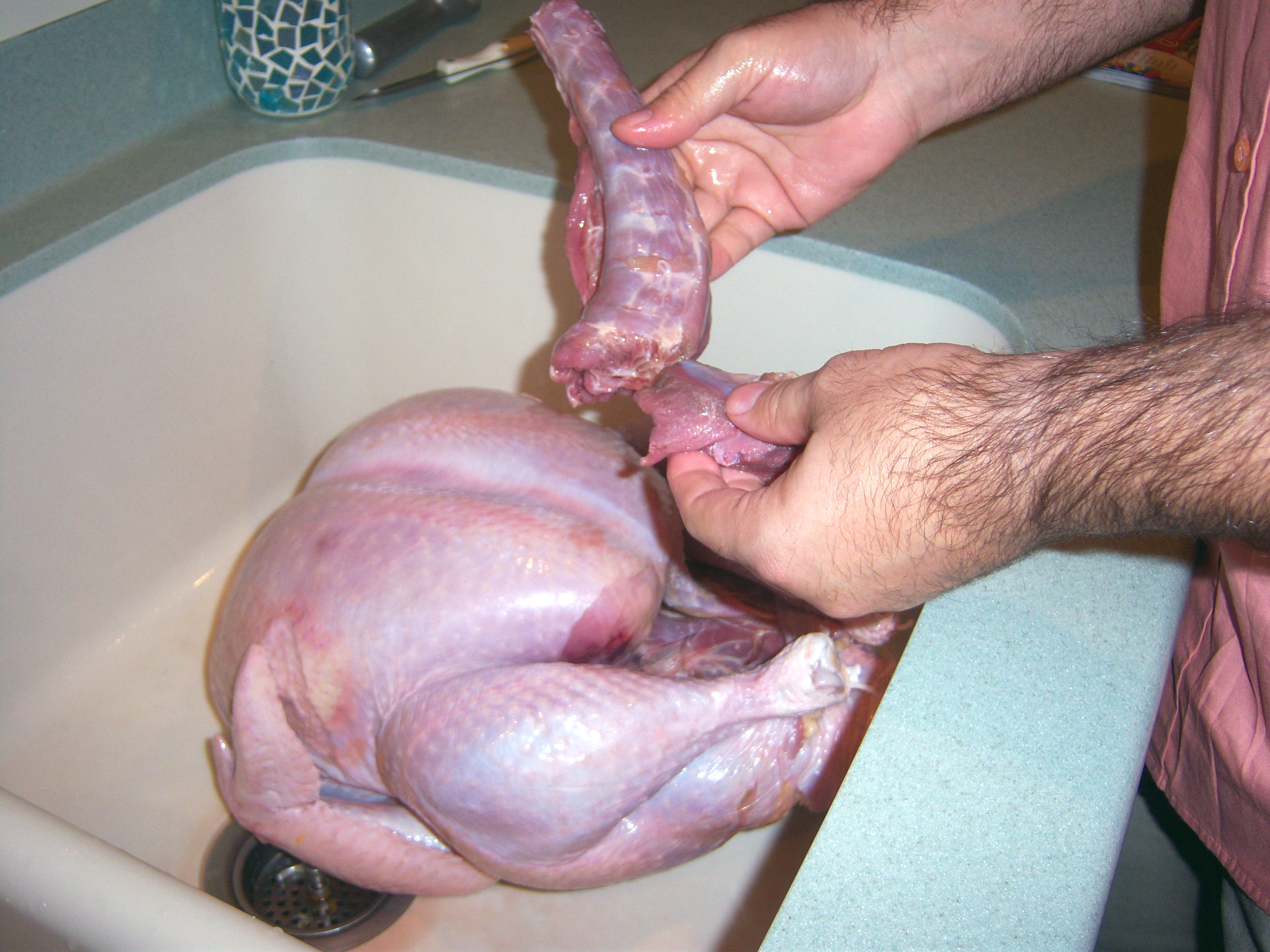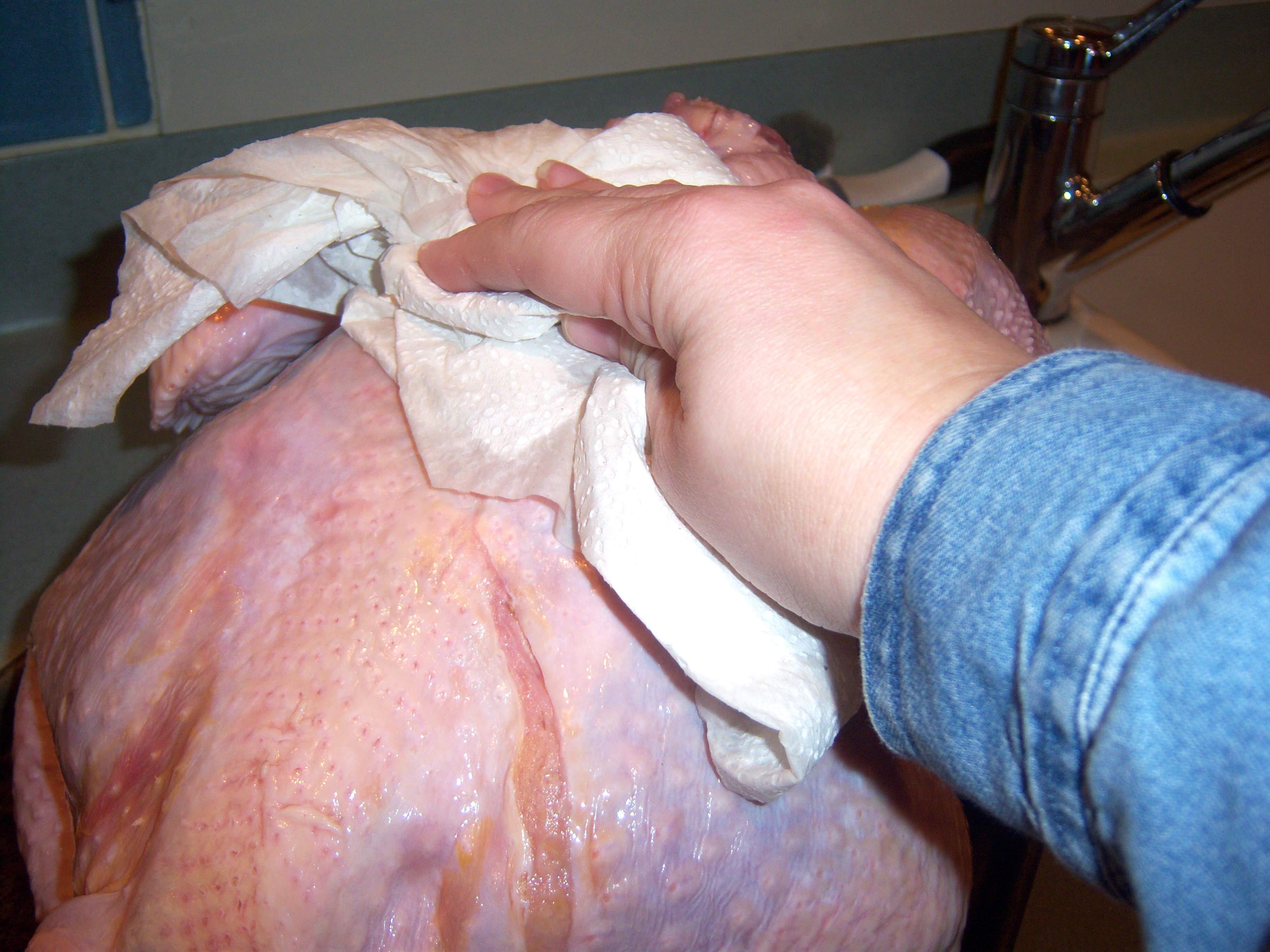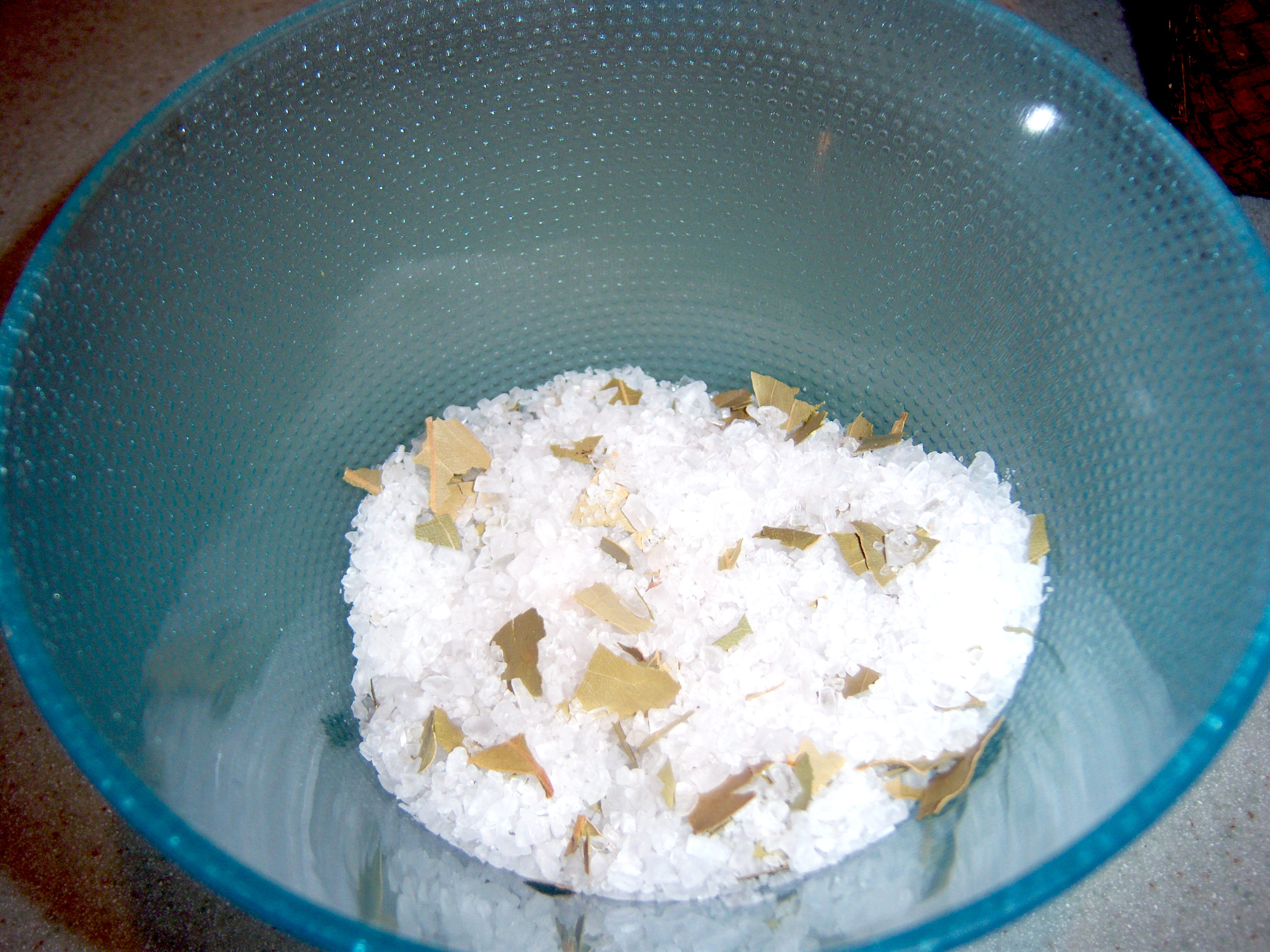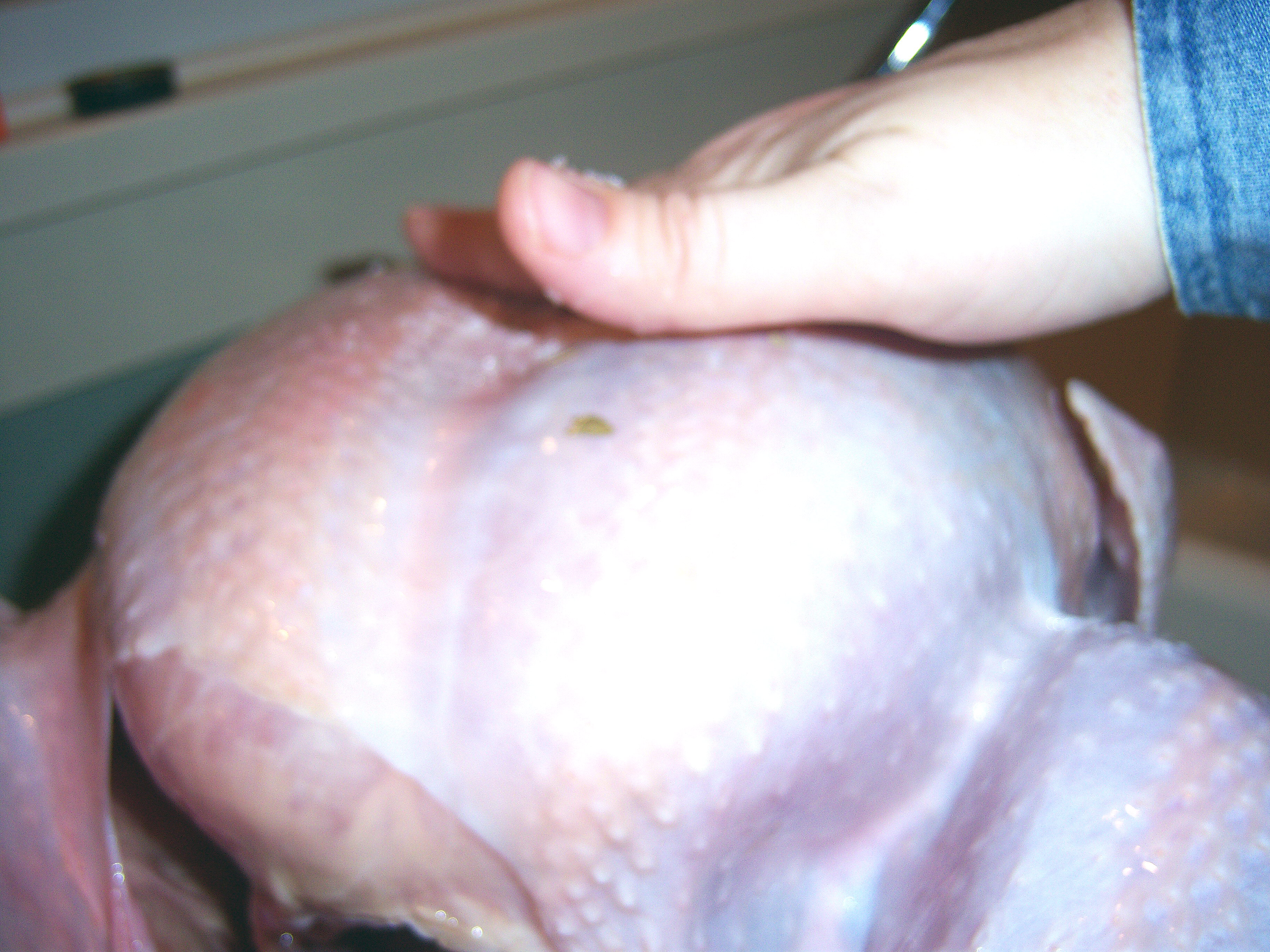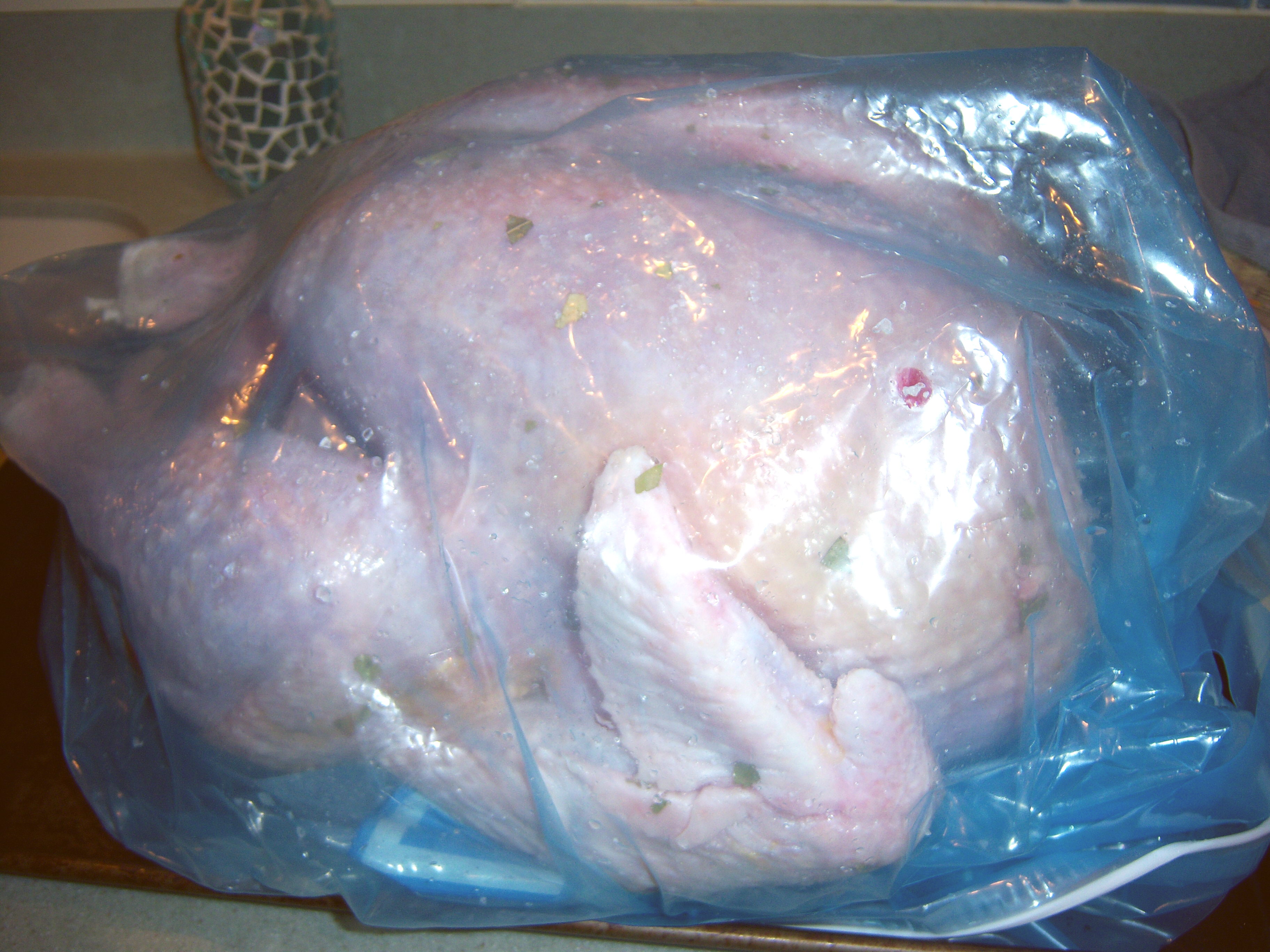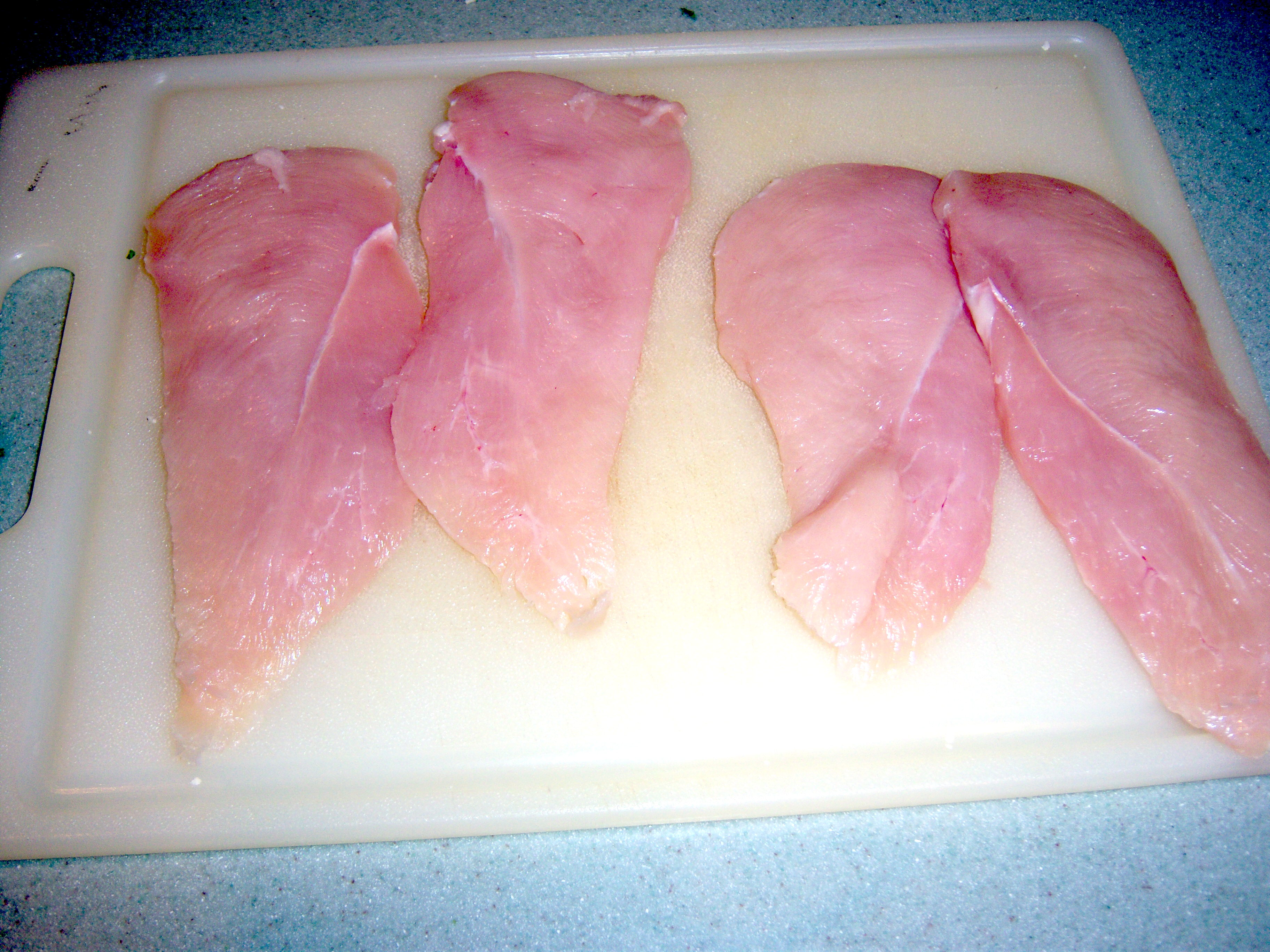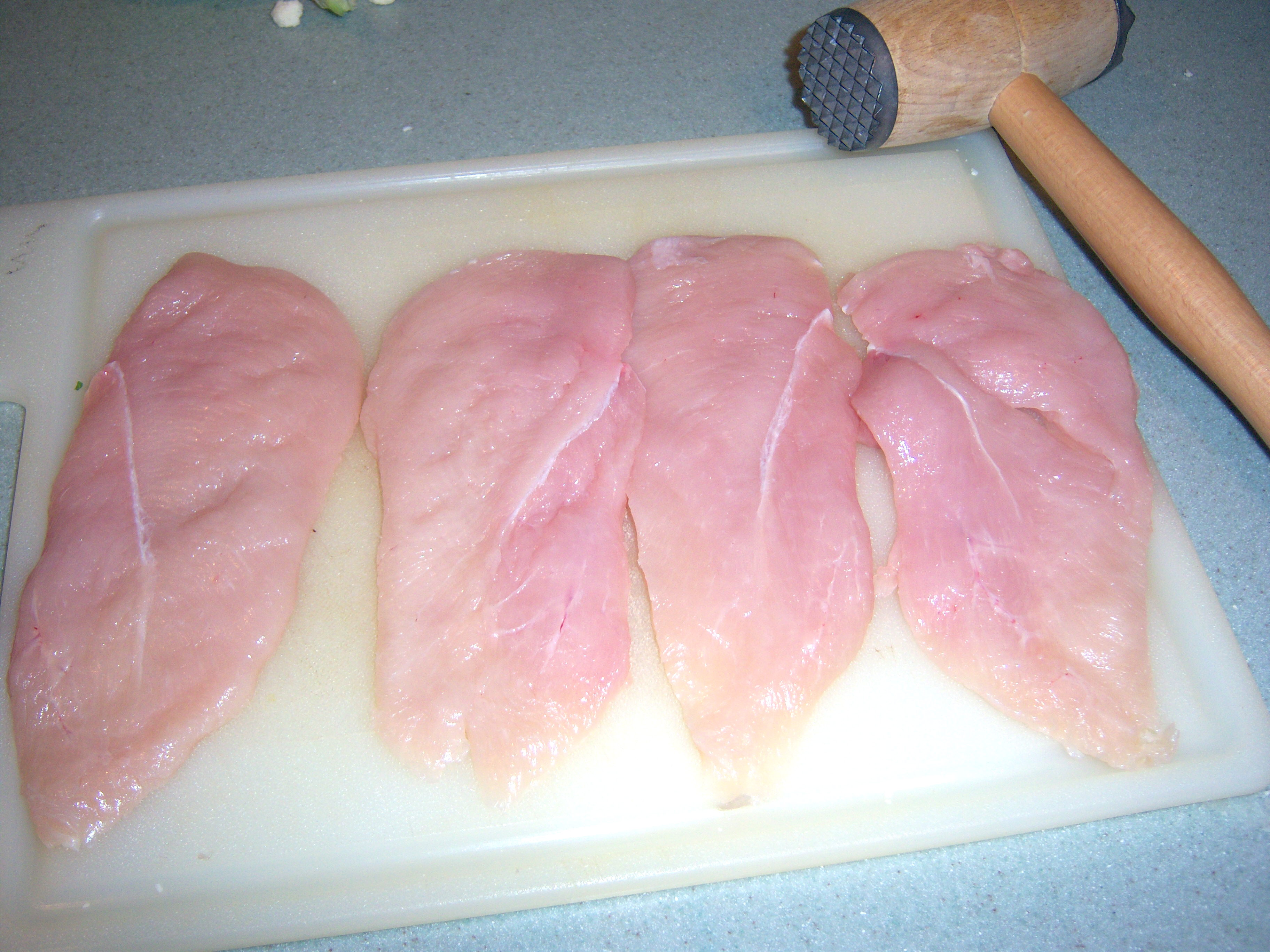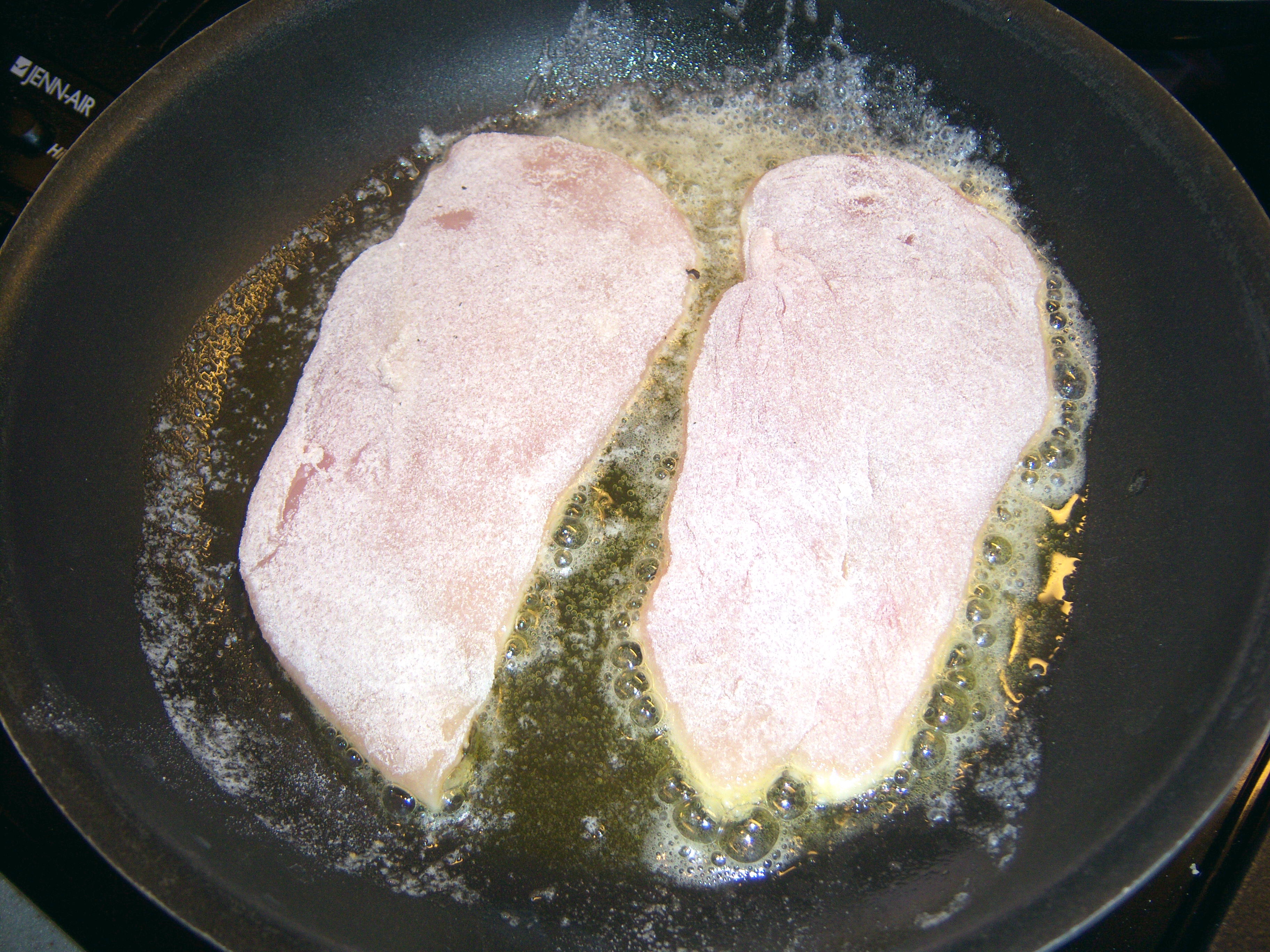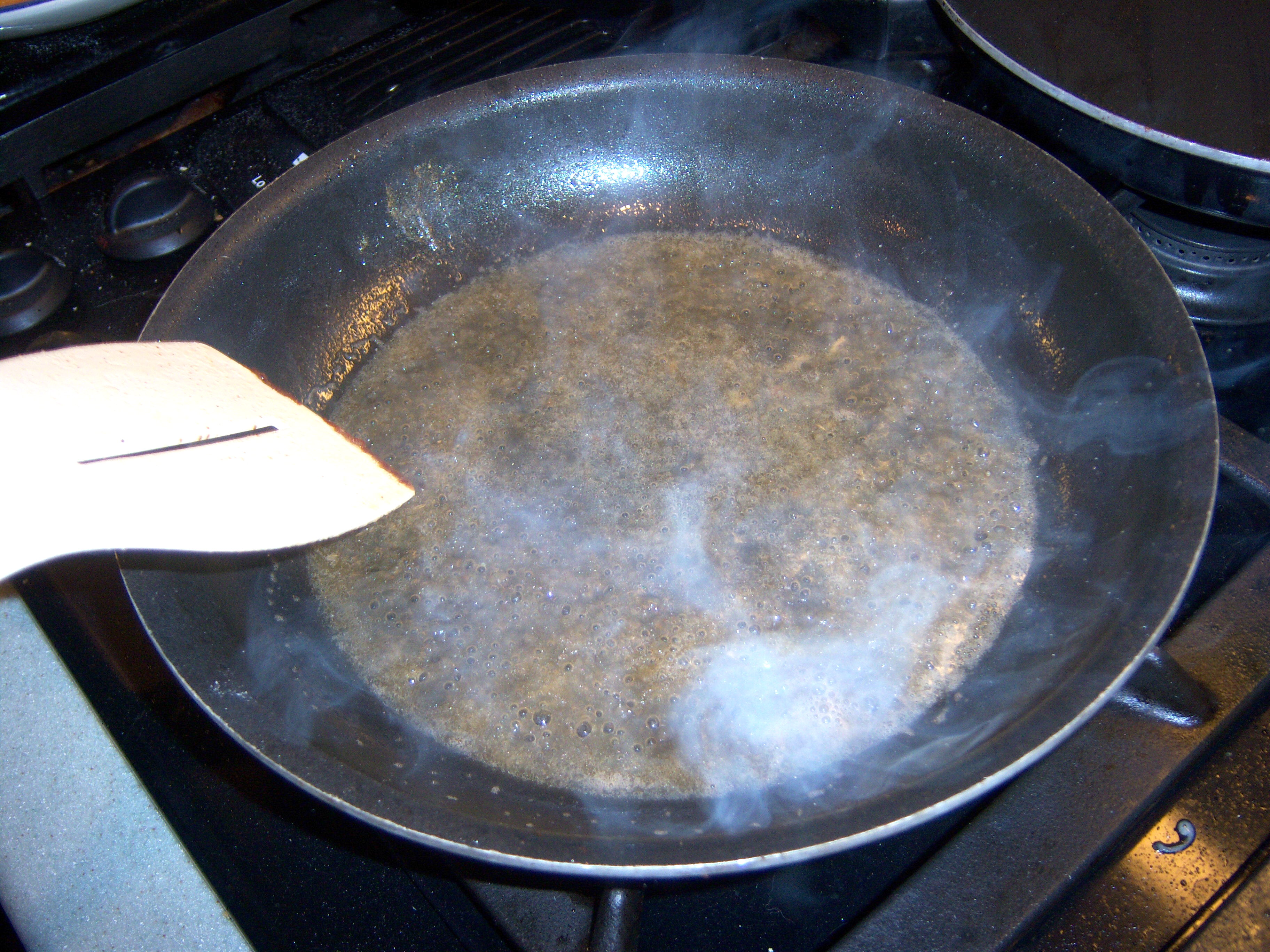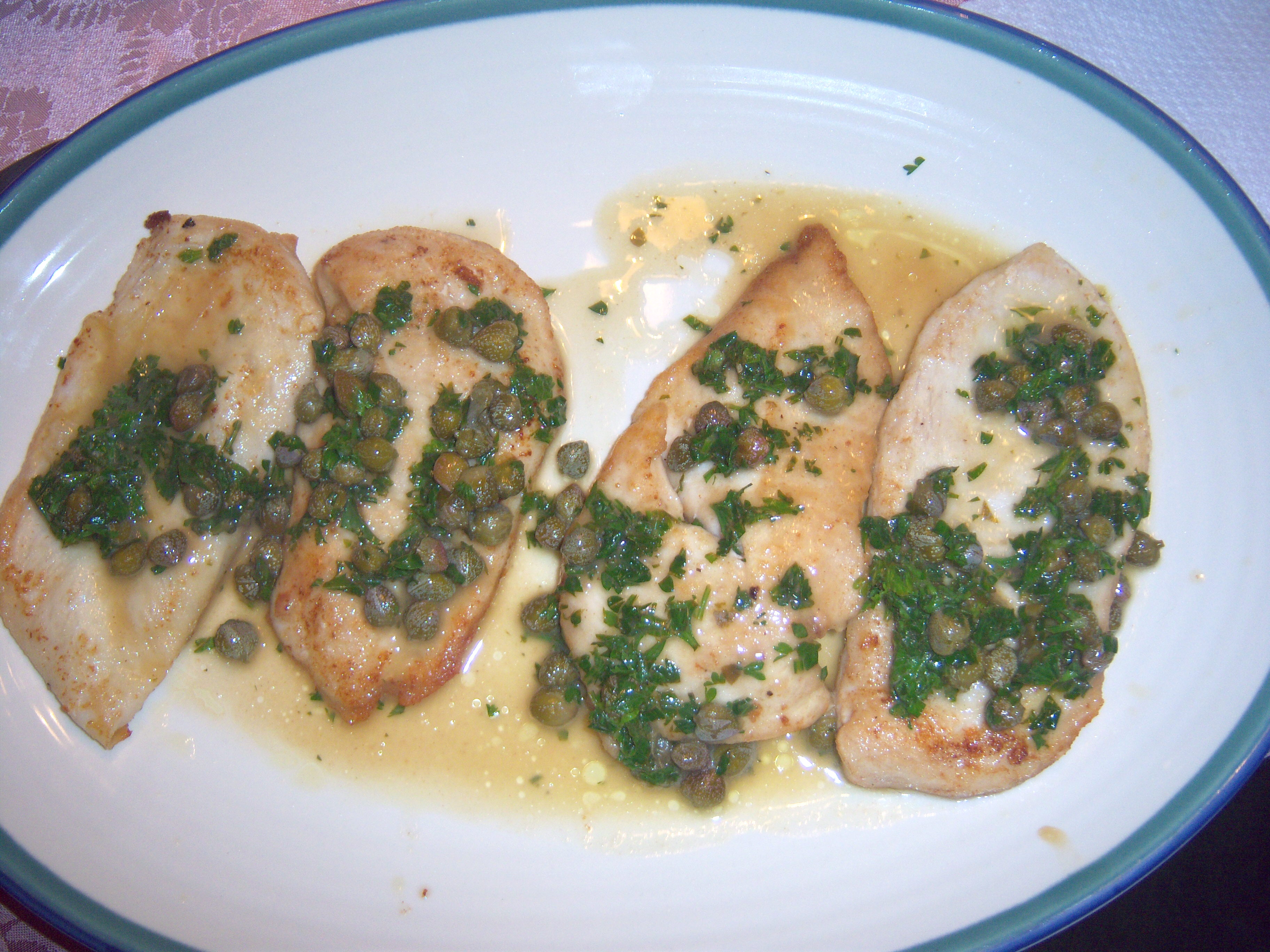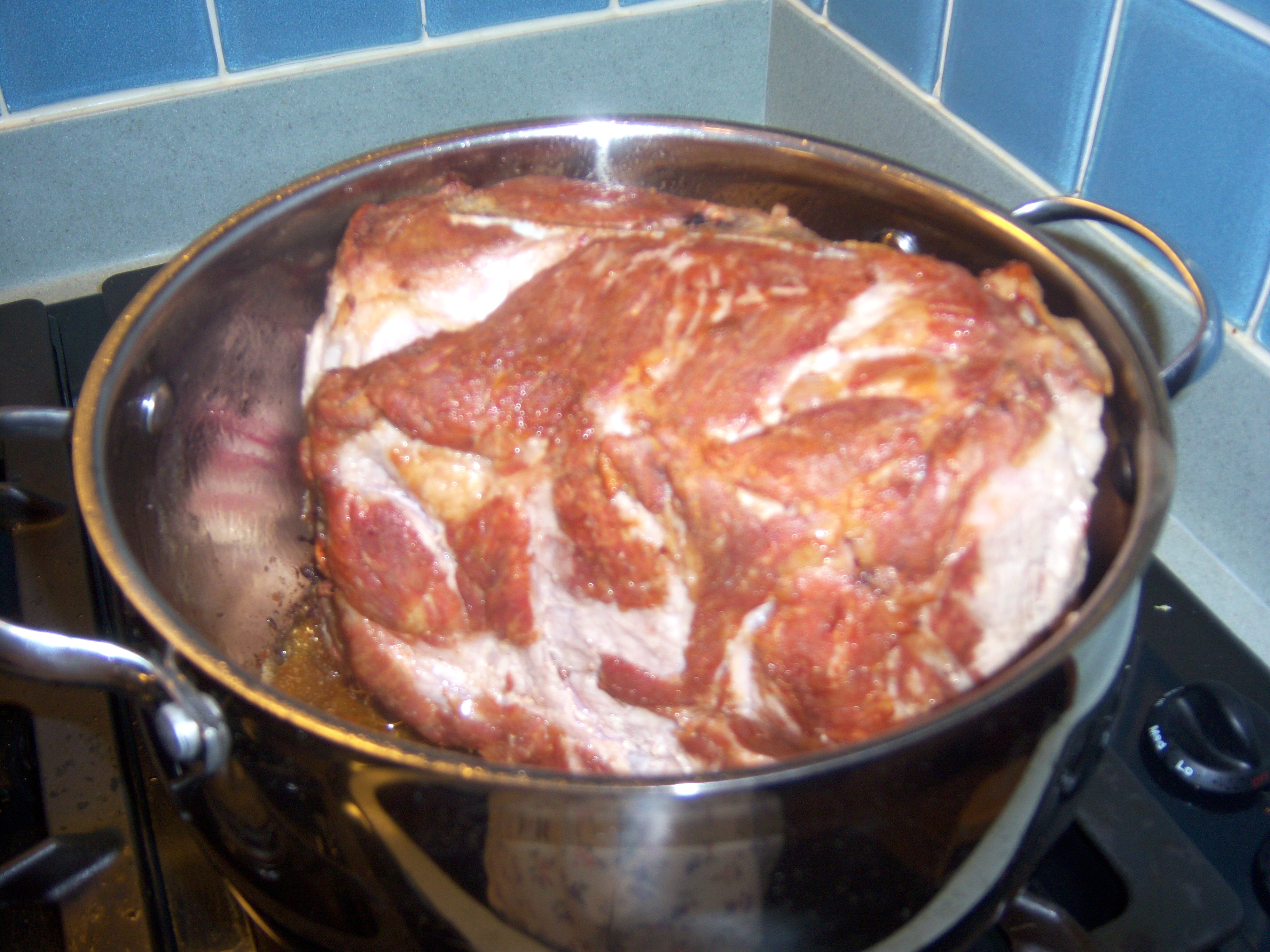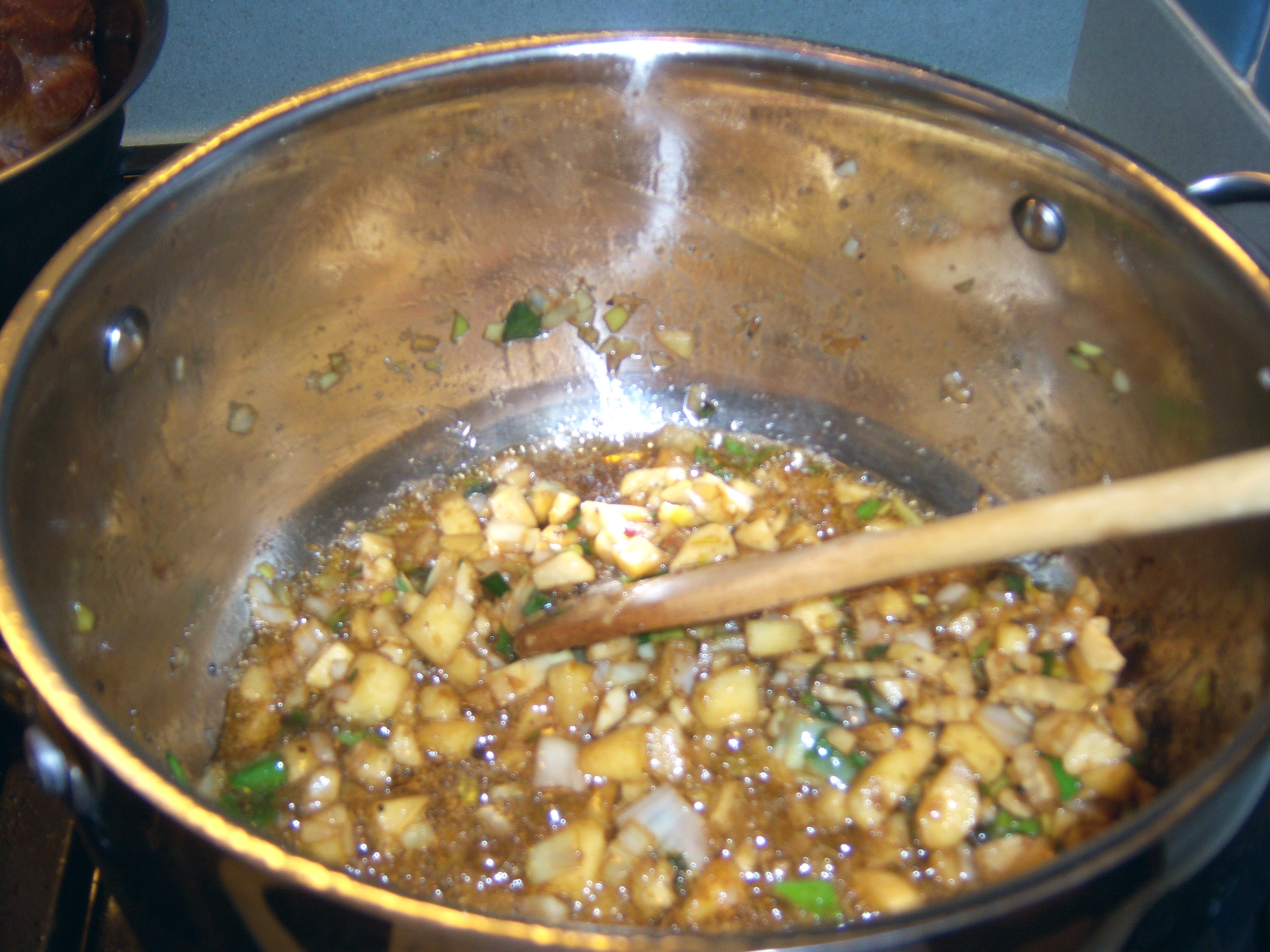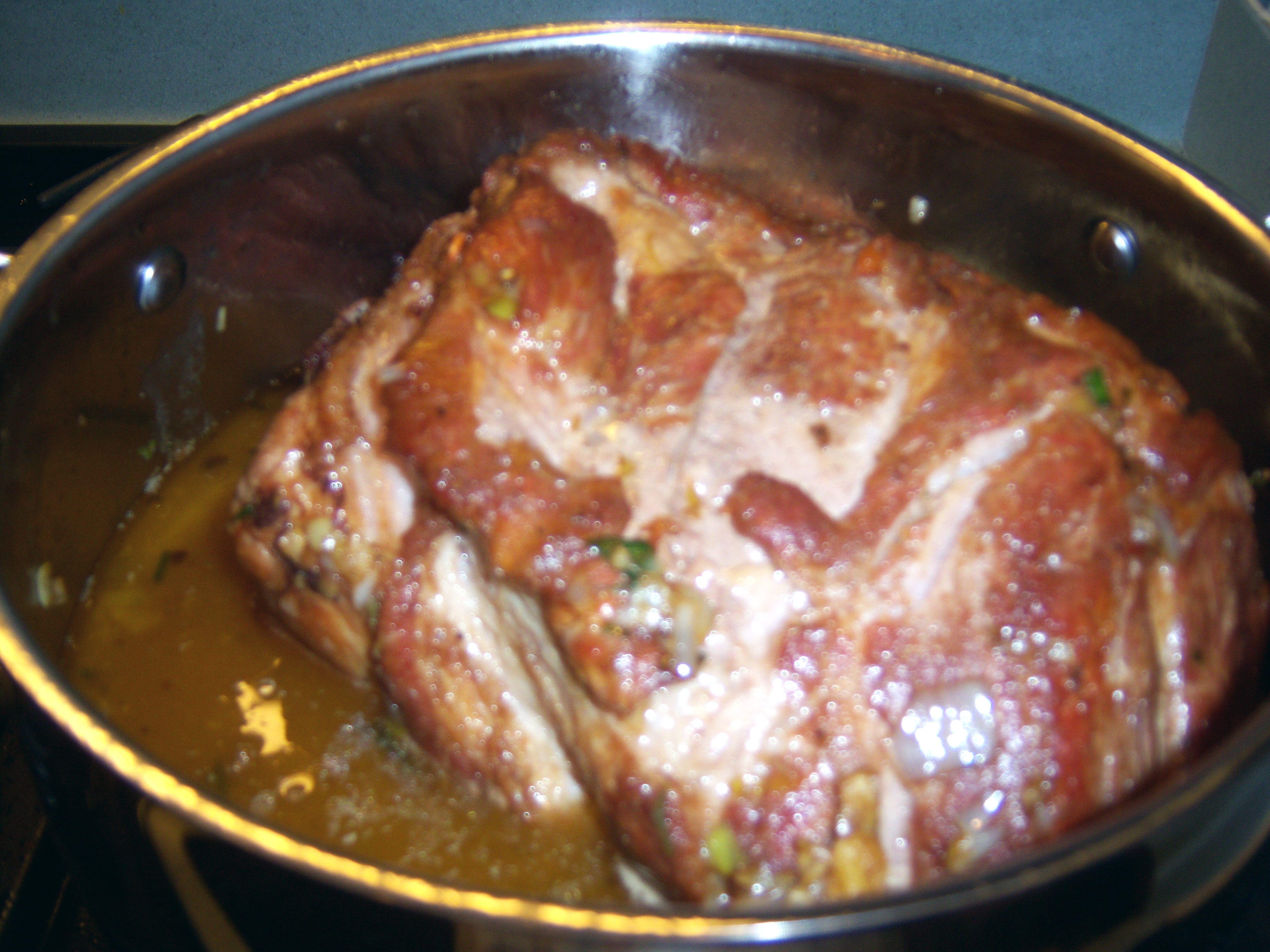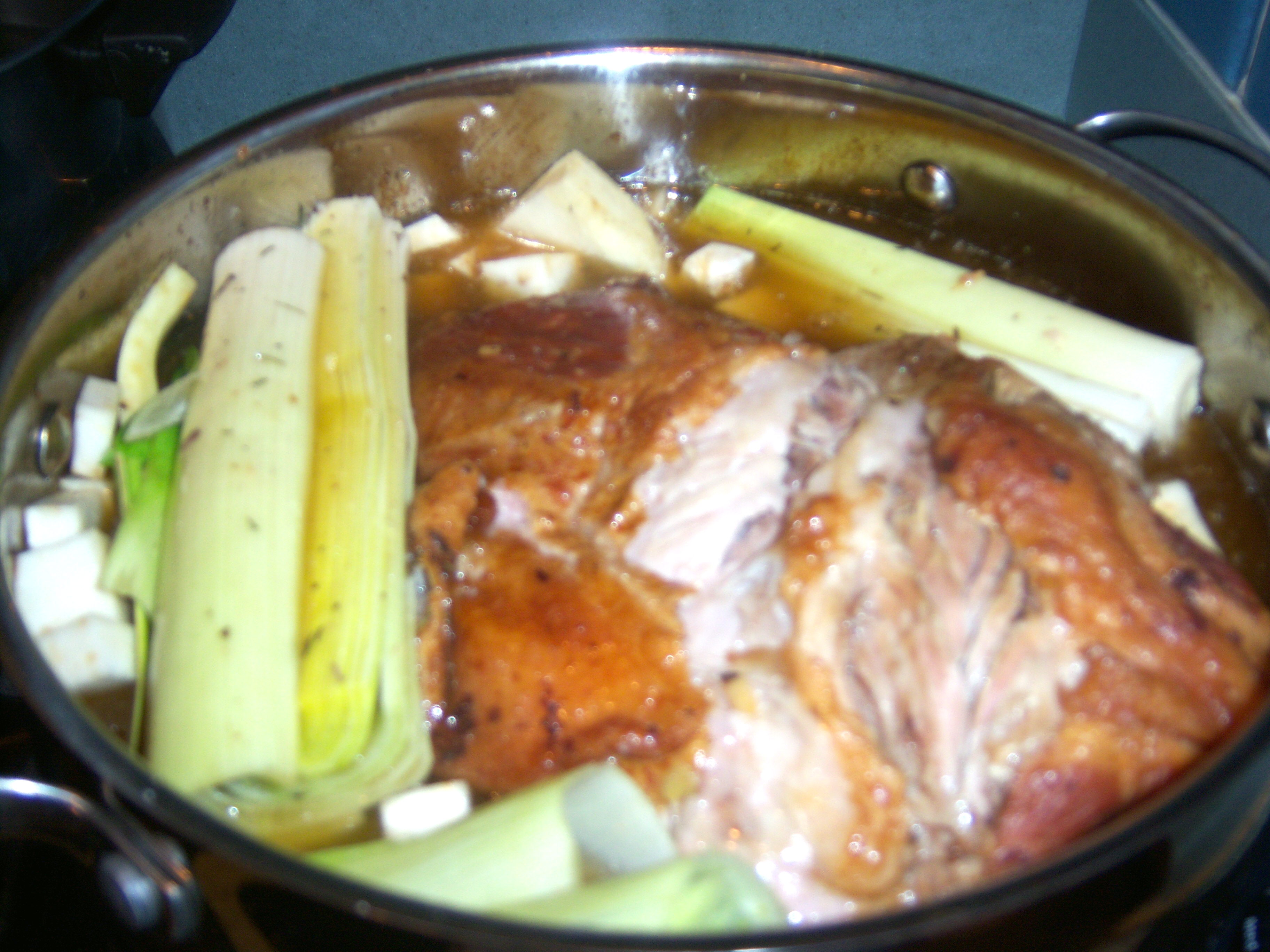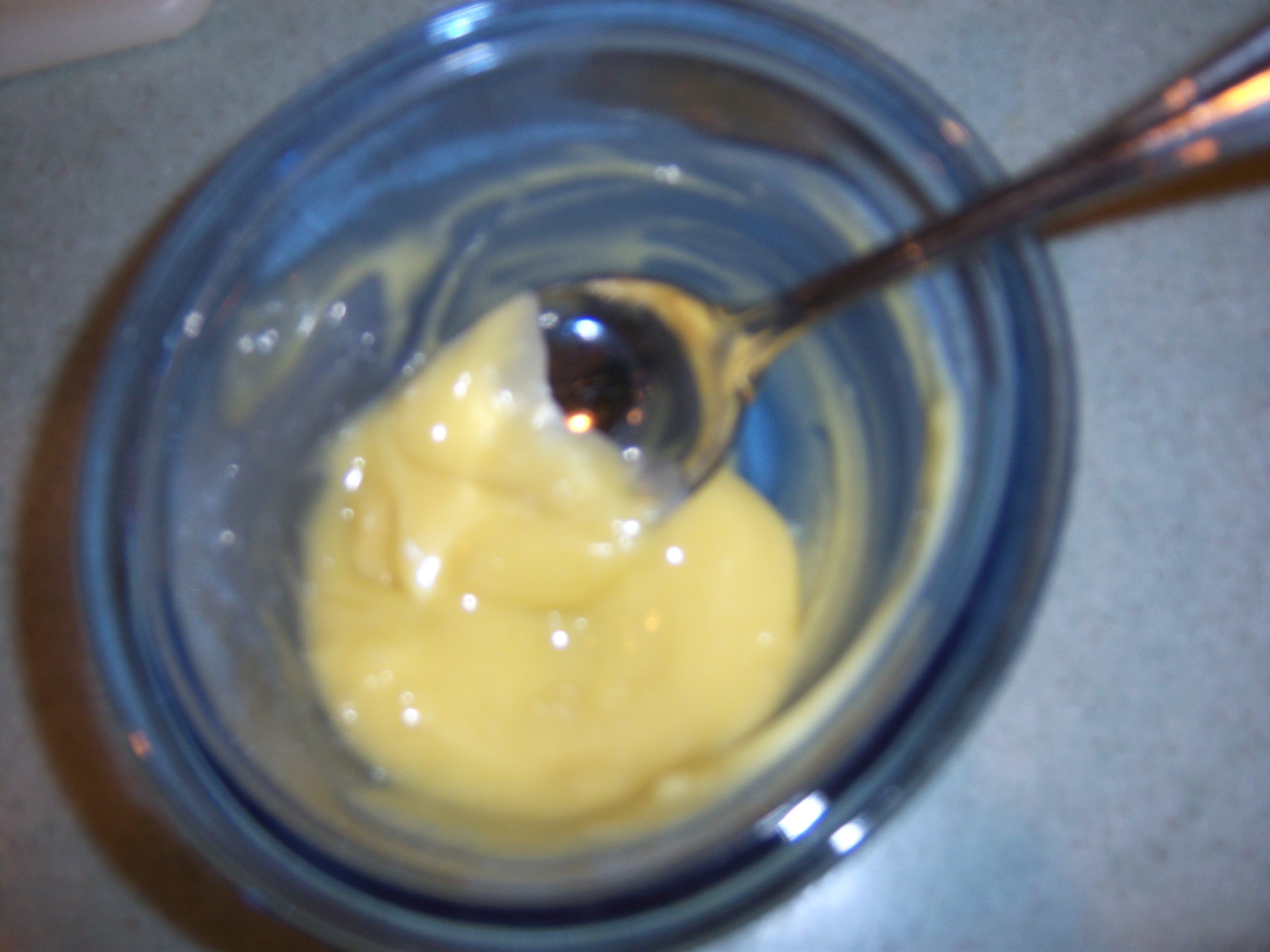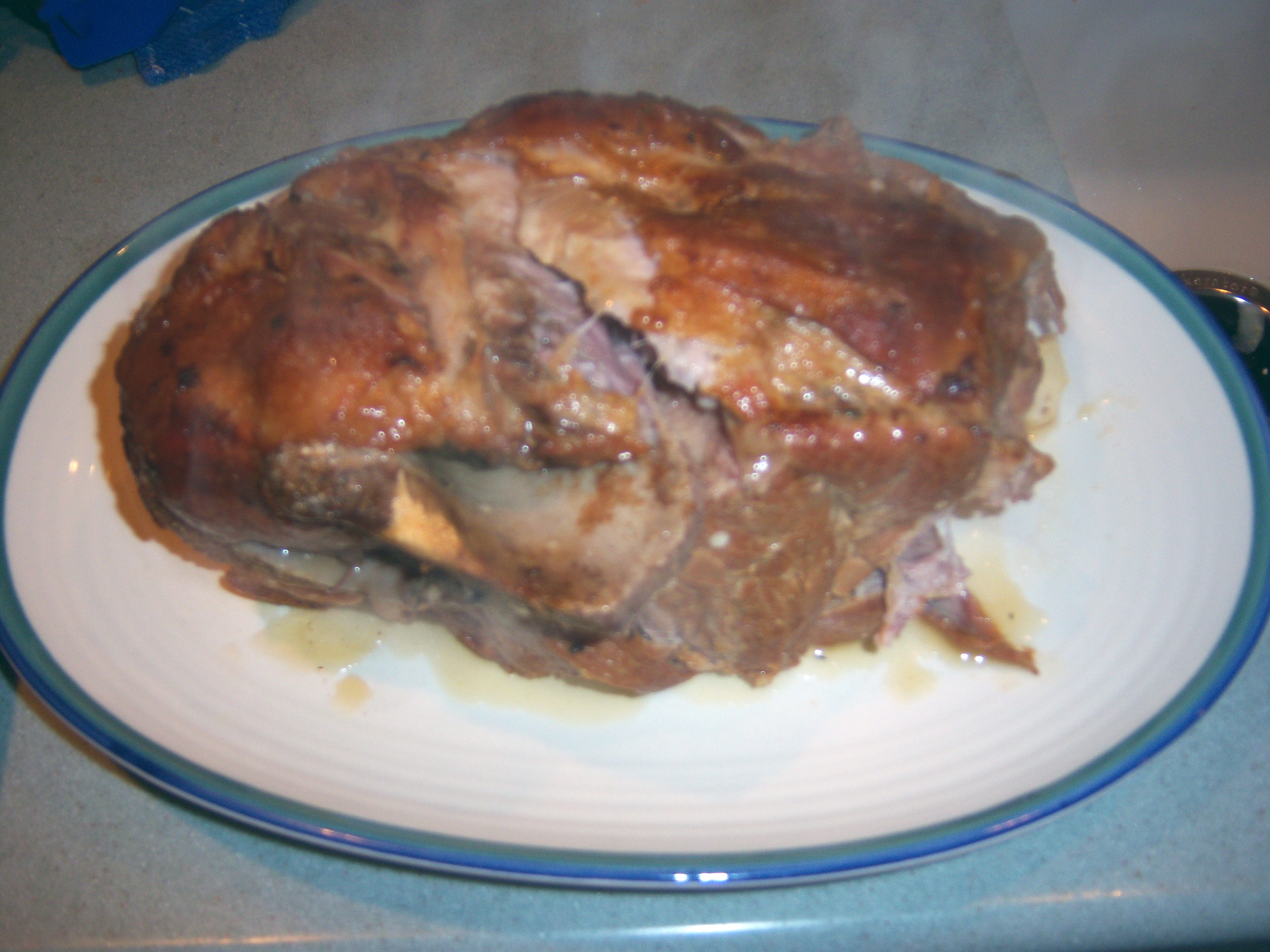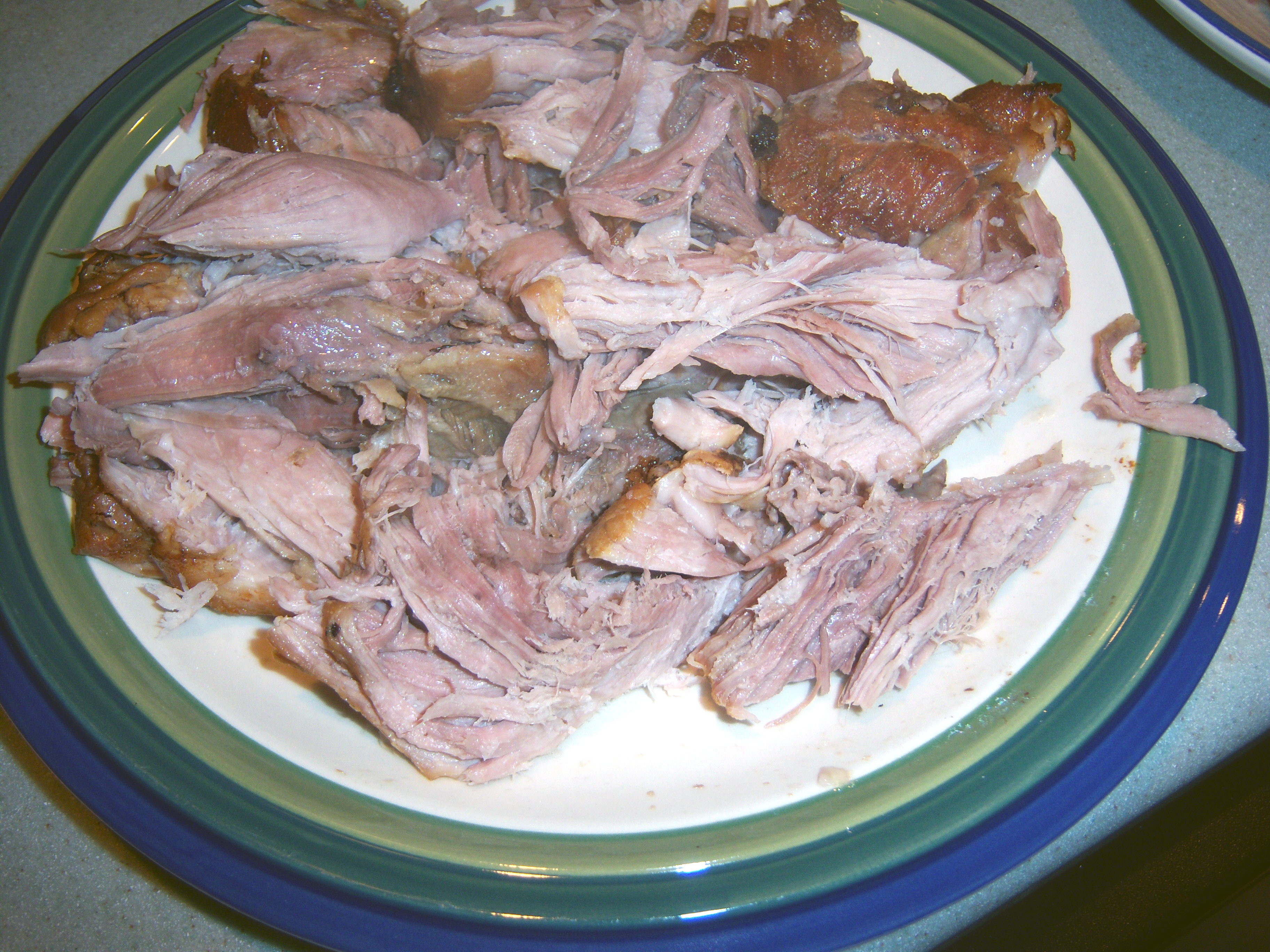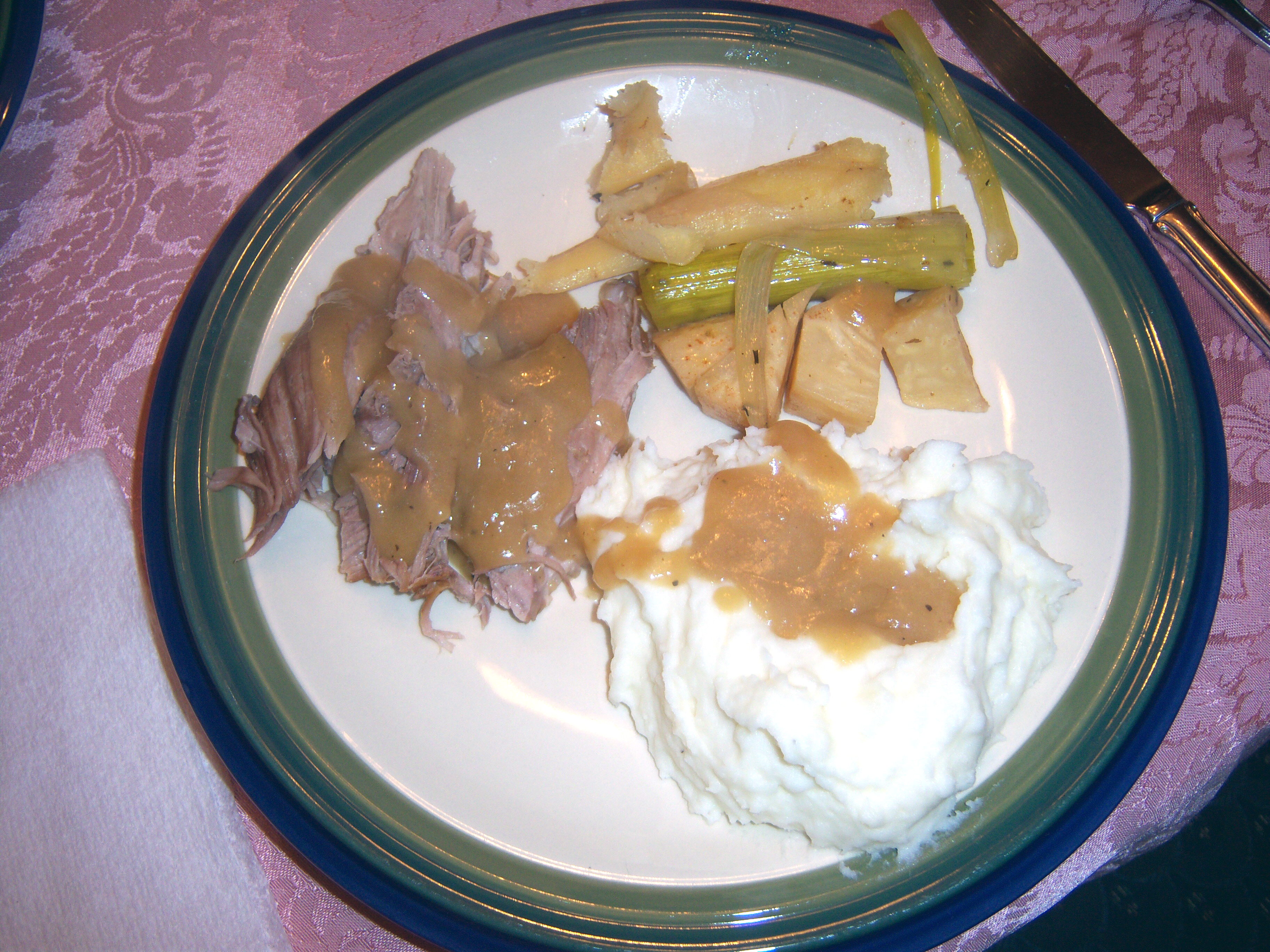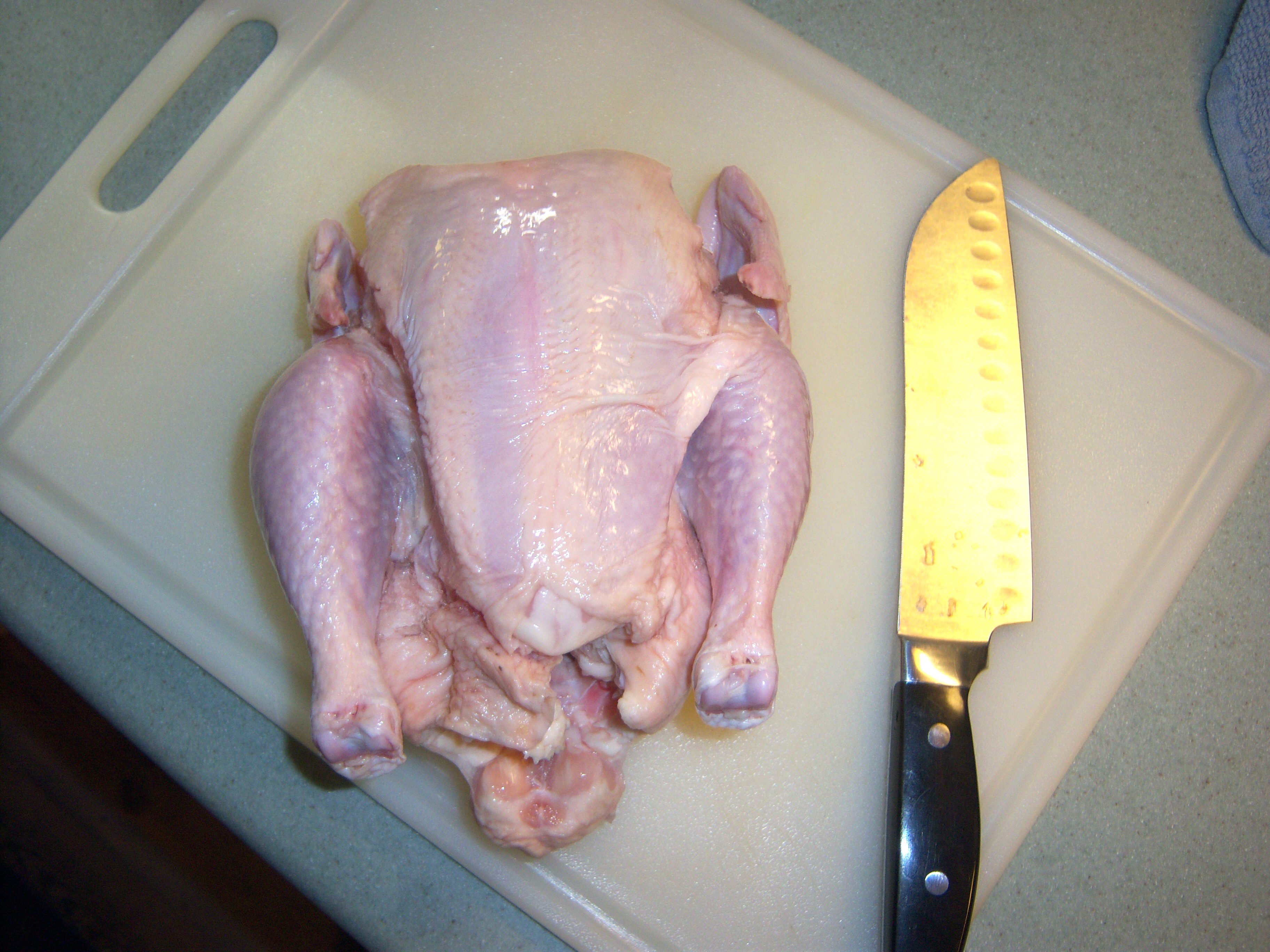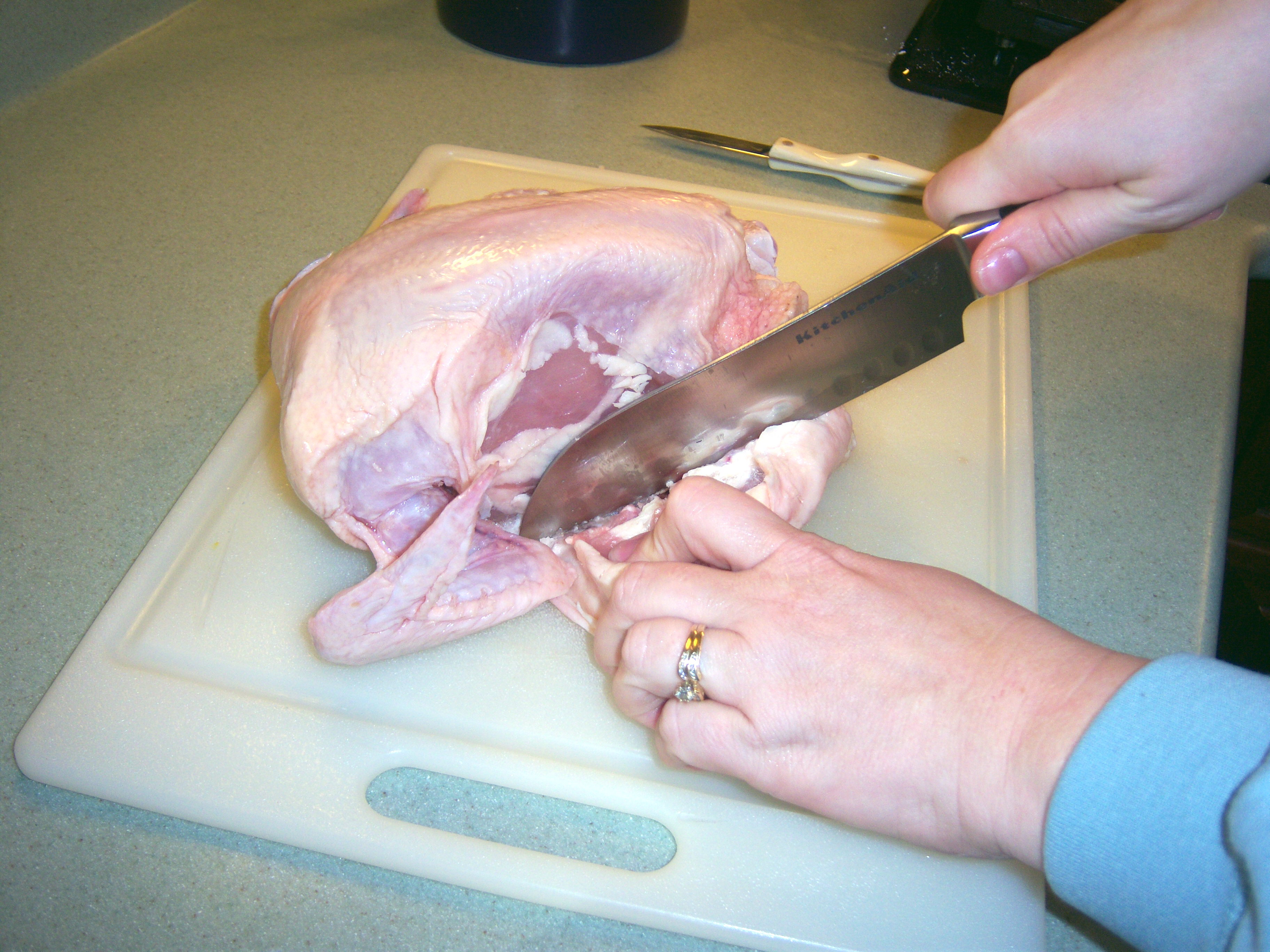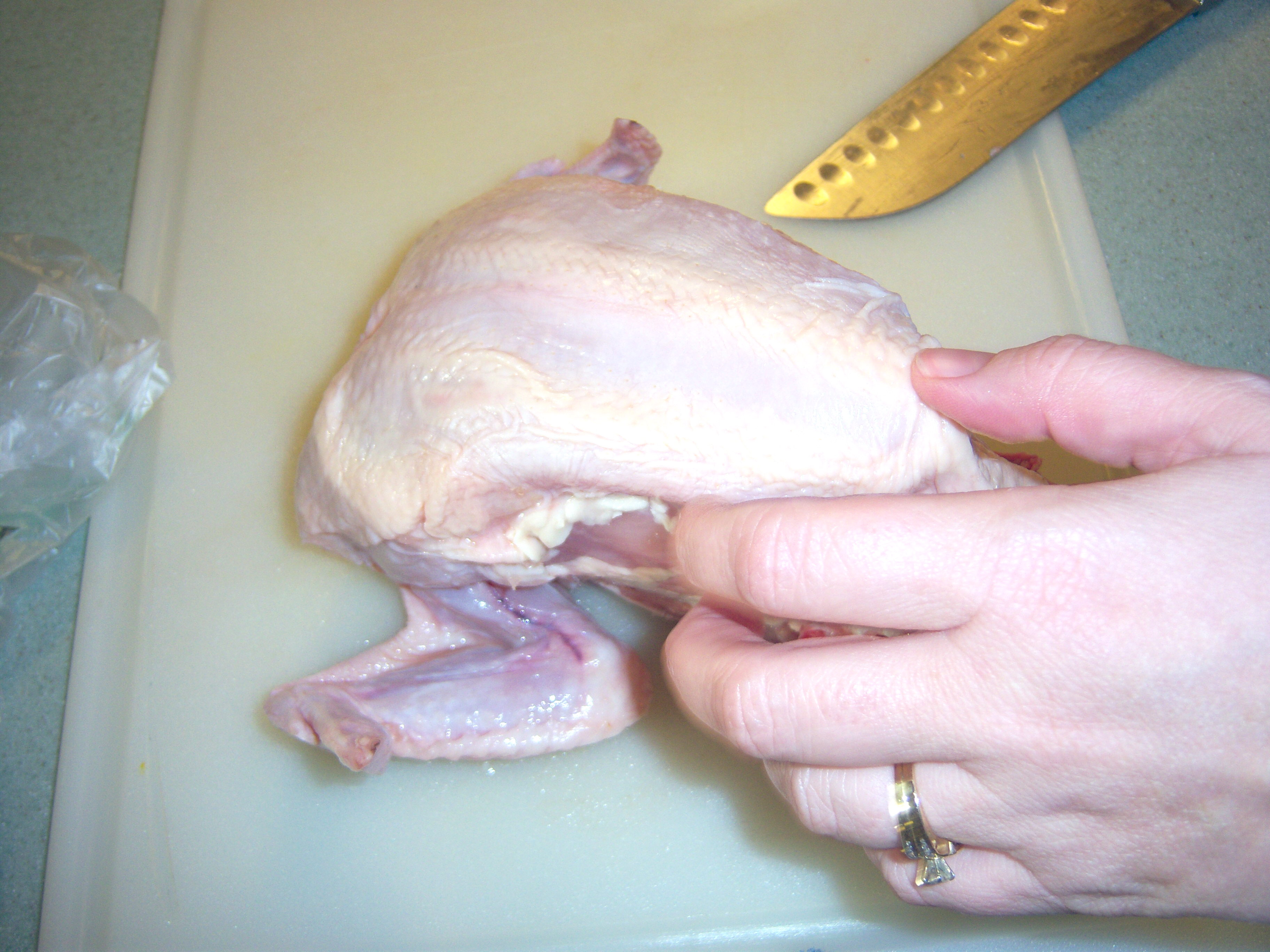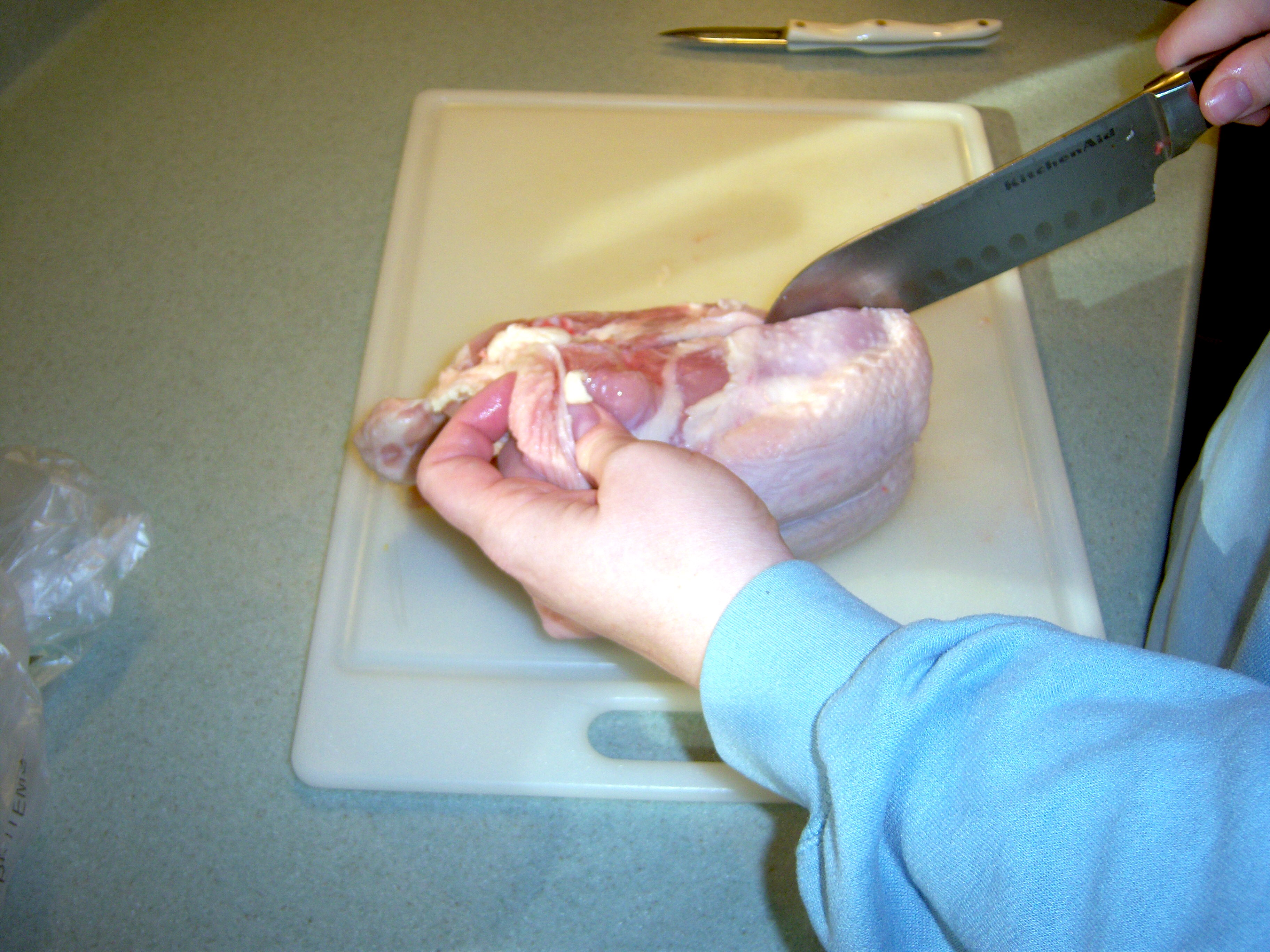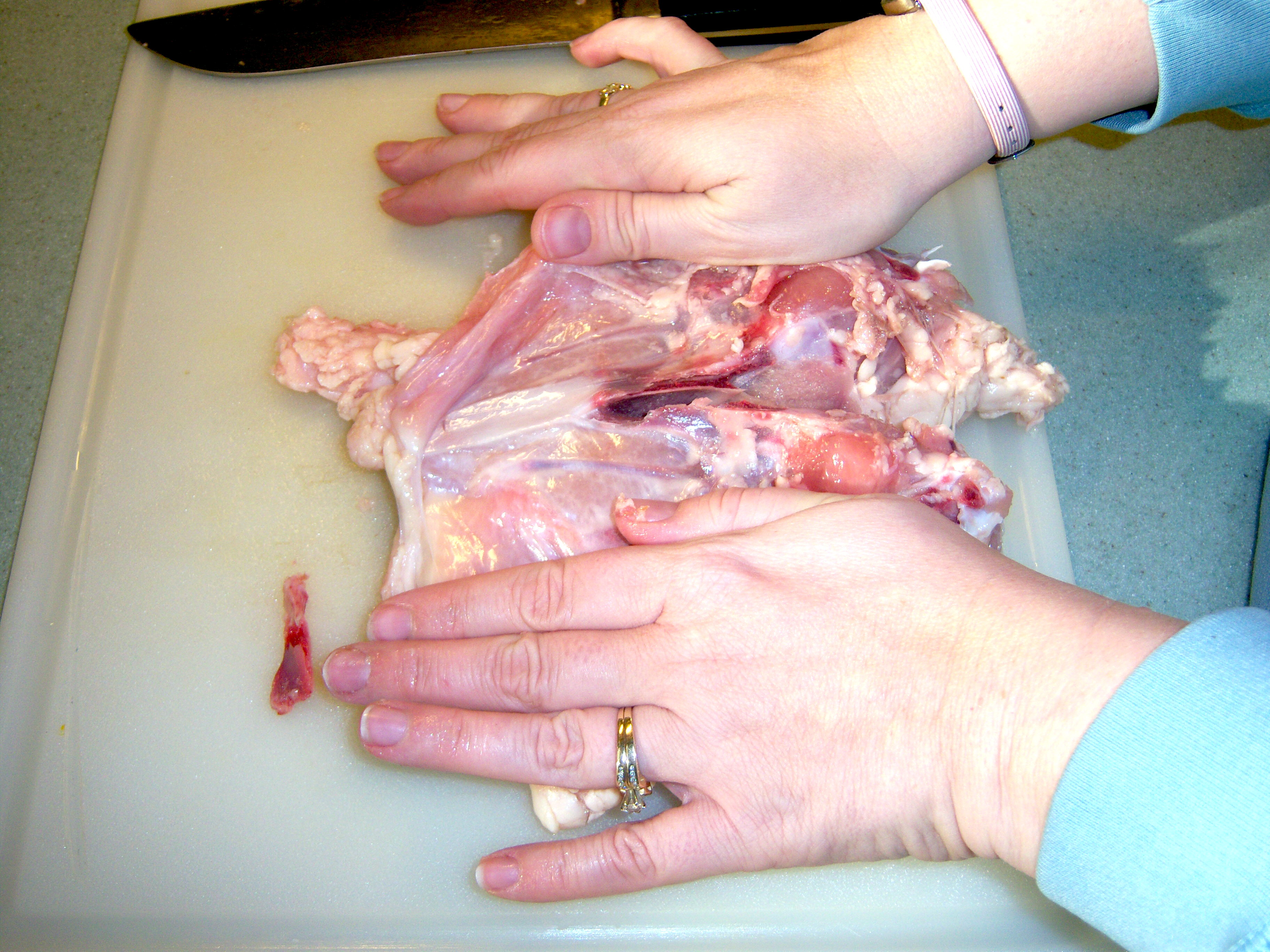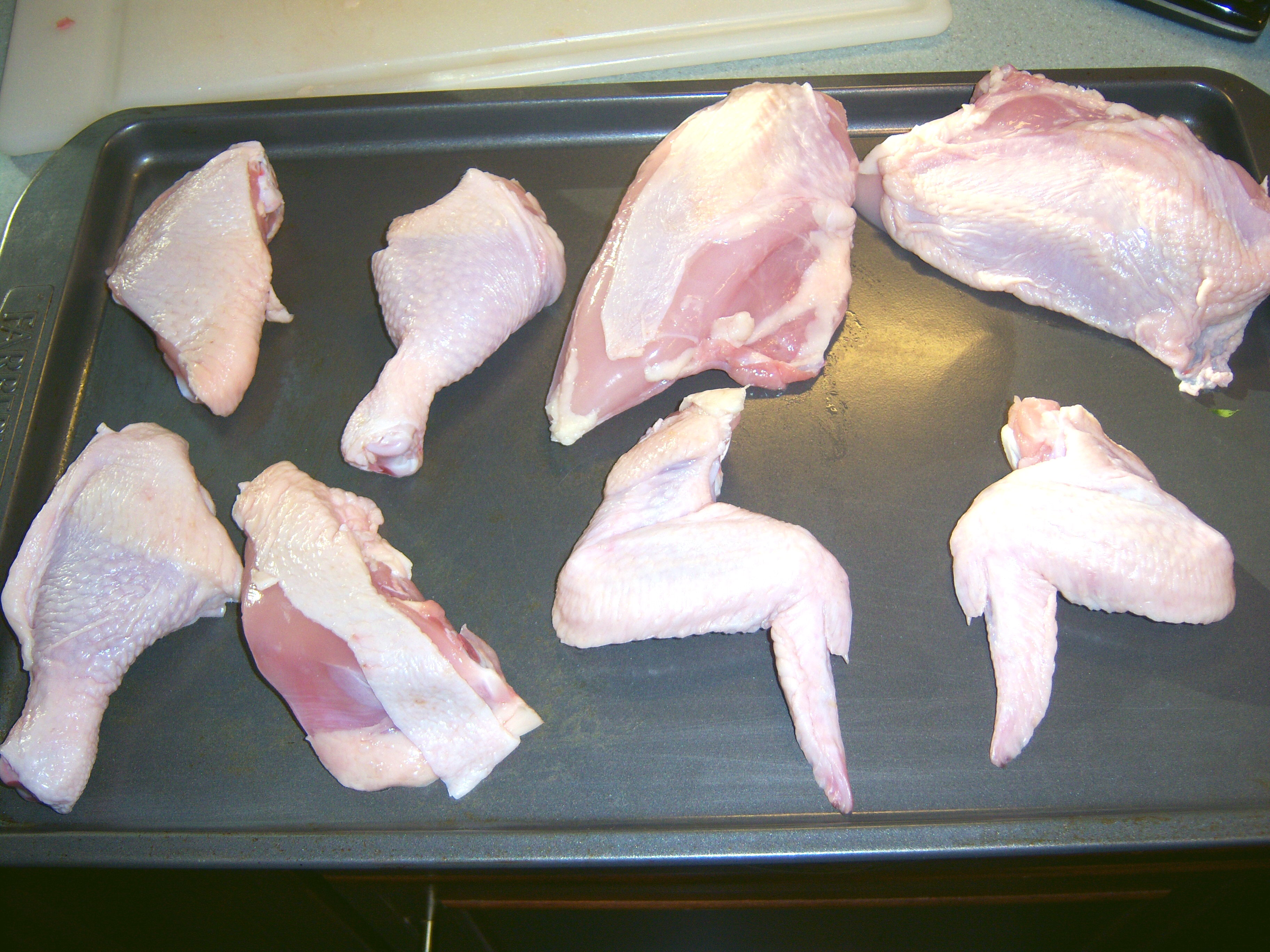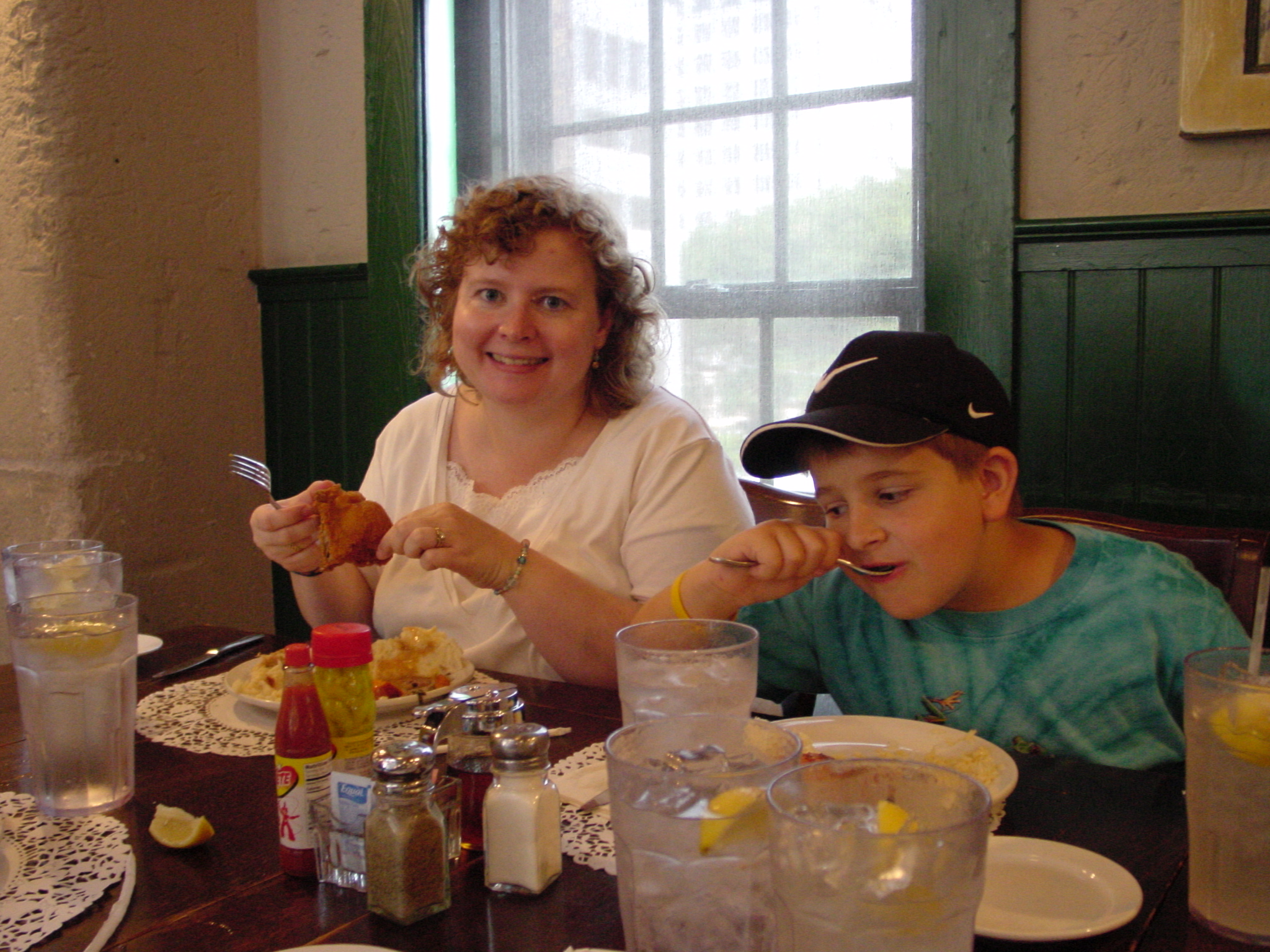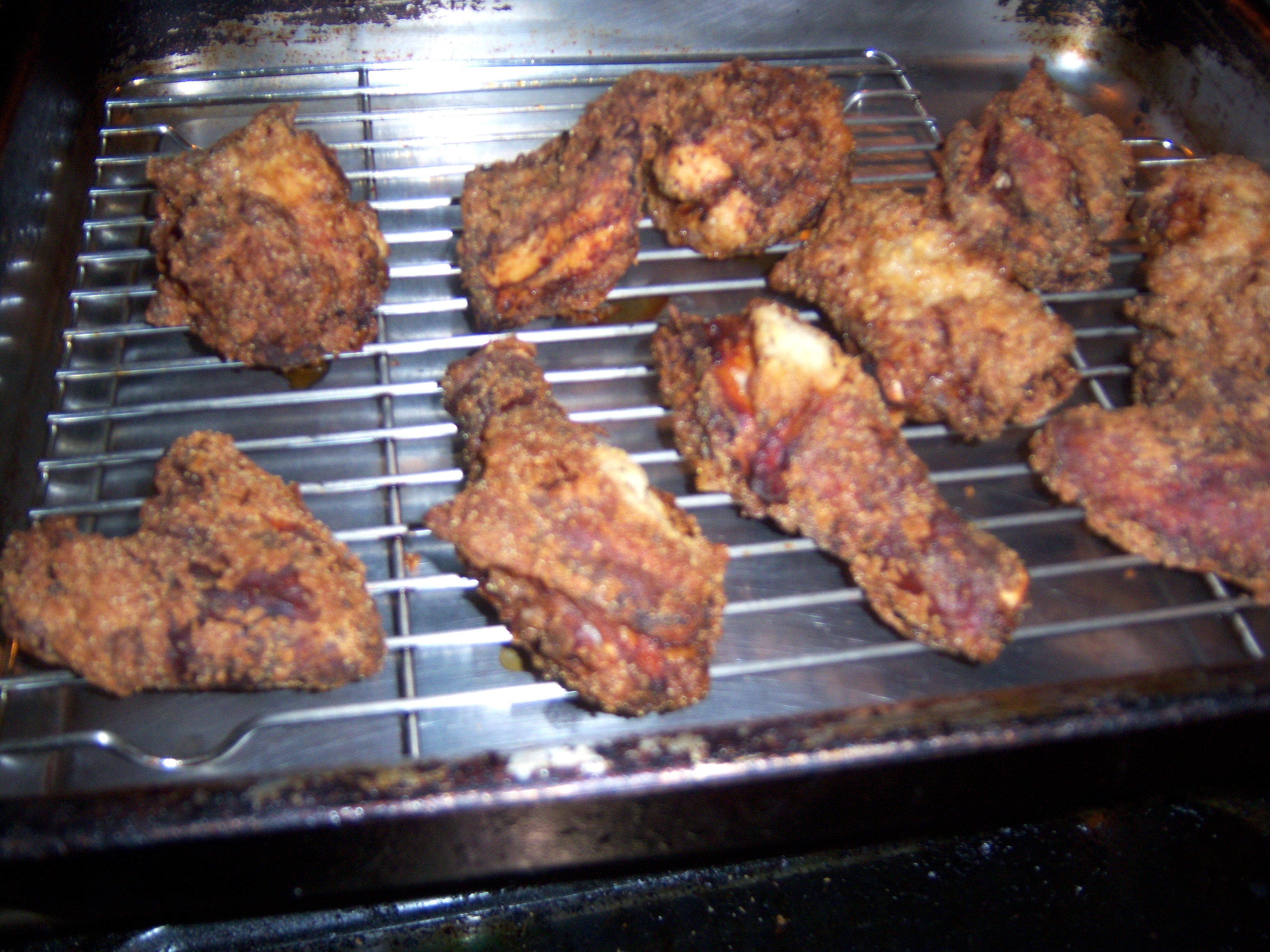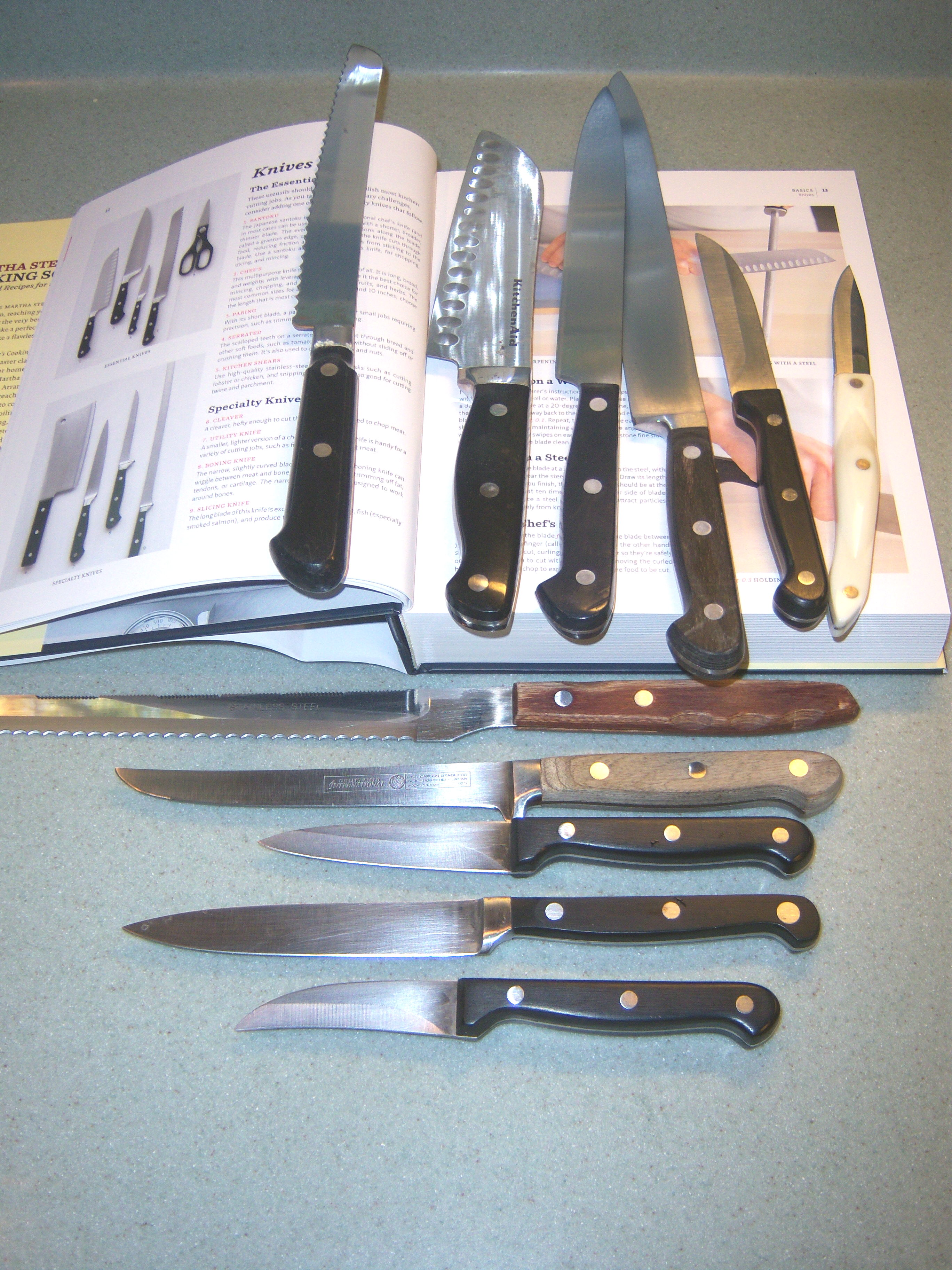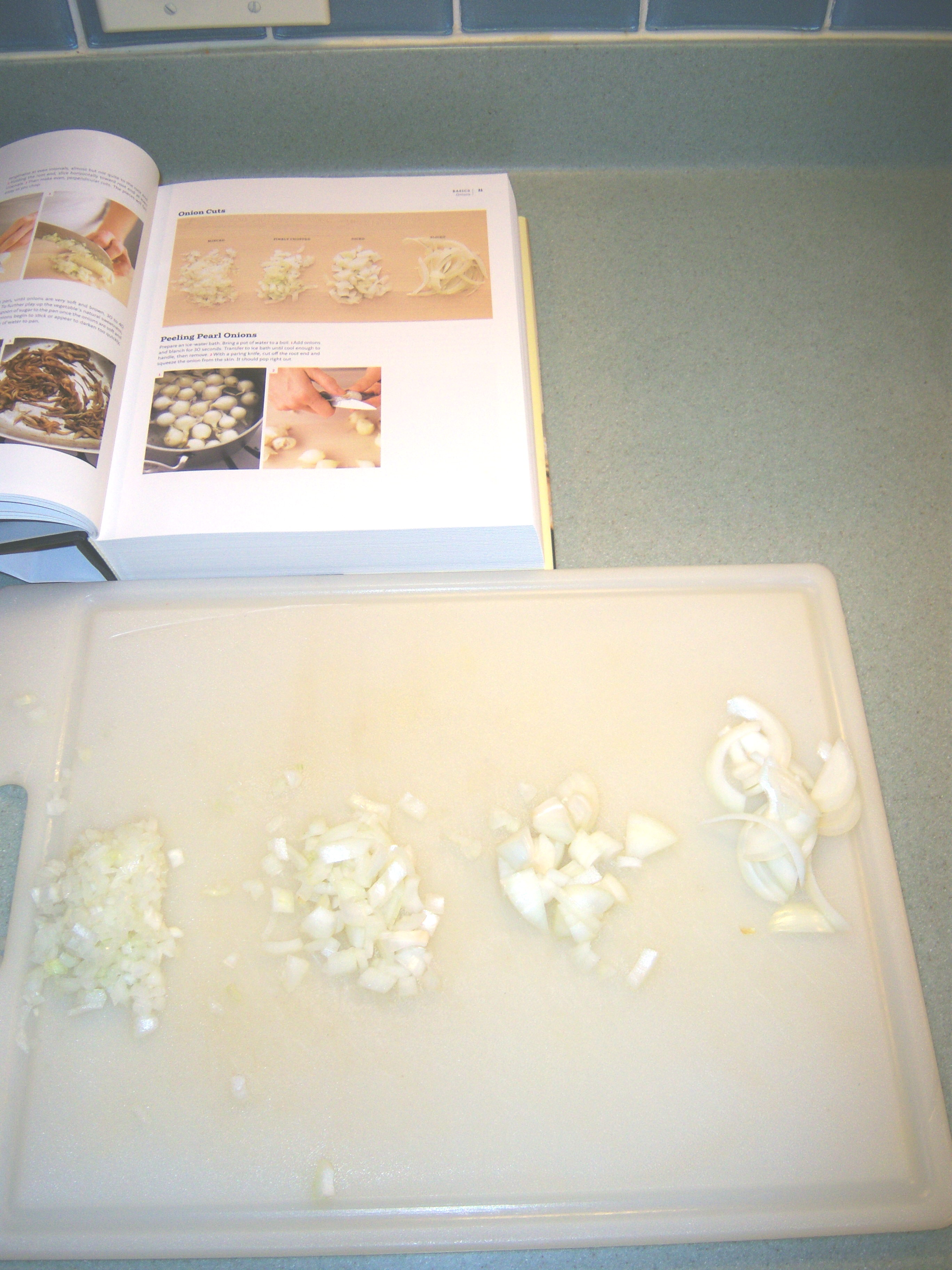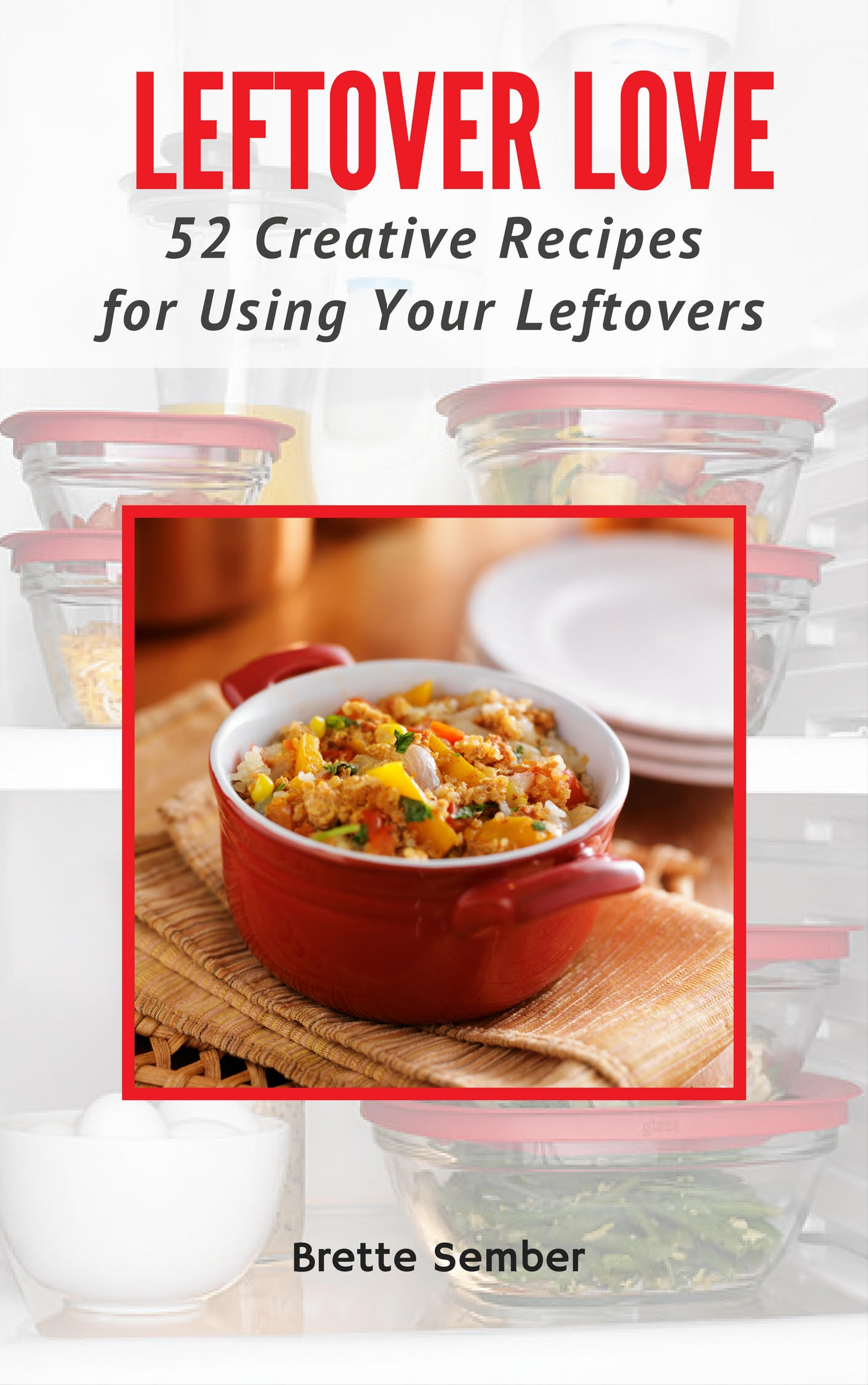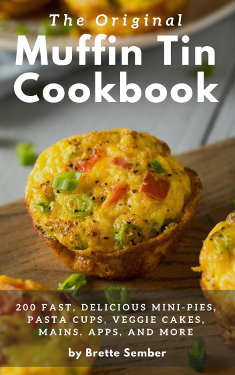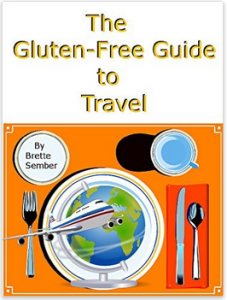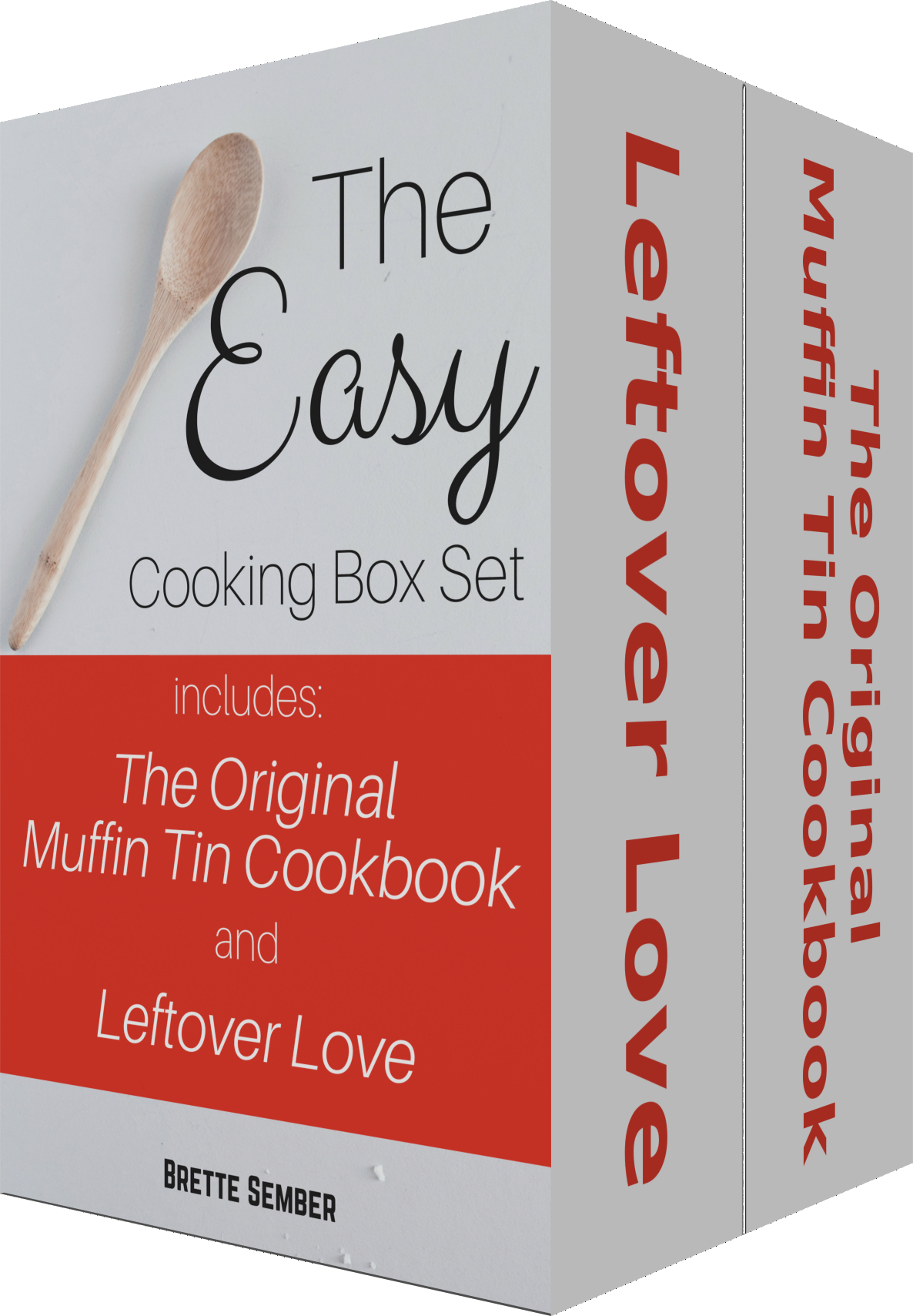On the latest cooking school, Martha and Sarah made a jellyroll, also called a genoise. I’ve heard of both of these terms, but didn’t really know what they meant. This is, essentially, a very thin cake that is rolled with filling inside it.
Now, before we dive in here, if I could take a moment to vent. Are there not more important skills one needs to know as a cook? I’m not sure this cake that no one has heard of would go to the top of my list. My other vent: It’s DECEMBER. Everyone is inundated with holiday cookies and candy. Who on earth wants to focus on learning a dessert that is not holiday related right now? Maybe a lesson on gravy or seafood would be helpful right now.
That being said, I geared up to make my first jellyroll. The key to this cake, says Martha, is the eggs. There is no other leavening, so you have to rely on the eggs to puff your cake.
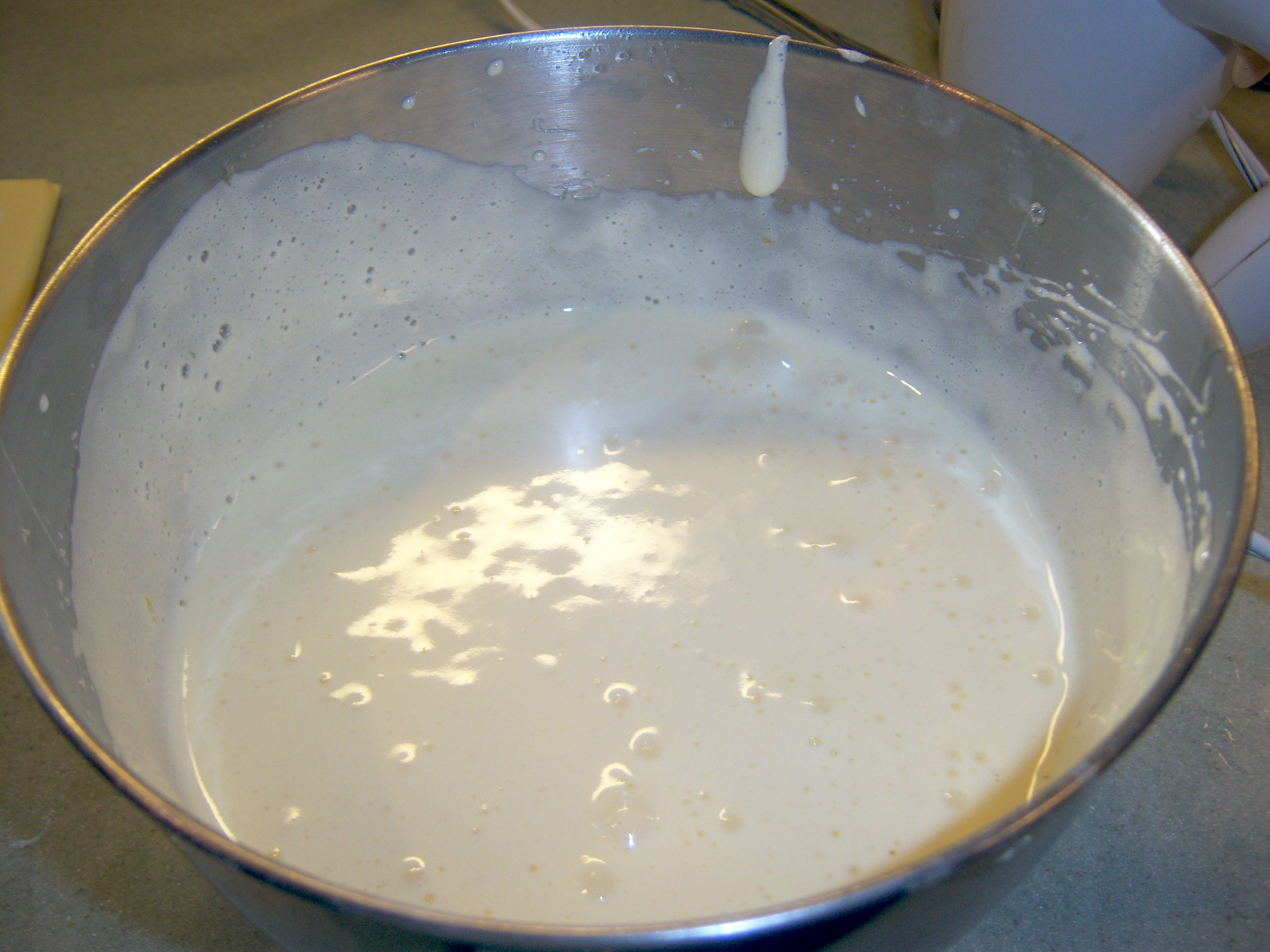
Beaten eggs
The first step is to cook the eggs and sugar over hot water until the sugar dissolves and the mixture is warm. I whisked it and it quickly came up to temperature. Next step, you beat the heck out of the eggs. It takes a few minutes but they turn almost white and increase in volume. They get very thick, like cake batter. It was actually an interesting transformation to watch.
After you’ve got your eggs ready, you sift in the dry ingredients. This cake

Dry ingredients sifted in
actually has almost nothing in it – eggs, sugar, flour, butter, and cocoa powder (I was making the chocolate). Once they’re in the bowl, you fold them in carefully. The trick is to keep your eggs inflated. I was a little worried here – my batter did deflate significantly once I

Completely folded
had it all folded in. Once you’ve got it folded, you drizzle your melted butter down the sides of the bowl and fold that in too.
Then you pour your batter into a baking sheet that has parchment paper (sprinkled with cocoa powder) in it. I had some trouble getting the batter to spread. It was rubbery and didn’t want to smooth out. Finally I had it ready for the oven. this cooks

Ready for the oven
very, very quickly – 6 minutes in a 450 degree oven.
Once it’s done, you let it cool slightly in the pan. While it’s still warm, you upend it onto a towel that is coated with cocoa powder. This seemed very, very weird to do (put a cake on a towel), but I did it.

My towel at the ready
Once you’ve got it on the towel, you cover it with parchment and roll it up. Martha says this will give the cake some memory of the rolling, so it will be easier to roll with the filling. You let it sit, rolled up, until it is cool. I was afraid rolling it was going to be hard, but it wasn’t.

The rolled jellyroll
The next step is to unroll it once it’s cool. I did this and discovered the end of my jellyroll had broken right off. Eek!

Jellyroll SOS
I forged ahead though. First I put strawberry jam on the roll. Martha says to put a rum mixture on the chocolate jellyroll, but I’m not into rum. The recipe for the white jellyroll uses jam, so that’s what I did. My jam had big hunks of strawberry in it. I think I would pick those out next time – the lumps didn’t work out so well. Next I made whipped cream and smoothed that on.
Sarah Carey cautions to keep your filling 1/4 of an inch away from the sides. Good advice, I think. Otherwise it will all smoosh out the sides.

The filling
The next step is to roll it back up. I tucked the broken edge into the inside. It rolled up pretty easily. Some whipped cream did smoosh out at the very end. Martha says to wrap it back up in your towel and clip it so it will stay tight. You refrigerate this for half an hour to three hours. I recommend going closer to three hours to really get it set nicely. I was afraid it was all going to unroll when I took it out, but it didn’t.
I really recommend you trim the ends of the roll before serving. As you can see in the photo, it looks a little messy and not so pretty on the ends.
I was worried that it would be hard to slice – that it would smoosh all over when you cut it. No problems there either. The slices came off very nicely. The roll is very firm and simple to slice.

Plate o' happiness
What a pretty dessert this is! I loved the pink jam next to the white cream. It looked like a Ho-Ho. How’d it taste? Yummy! I thought it was going to be dry – the cake did seem a little dry when I was rolling it. The jam and cream really soak in and soften it. You get a wonderful mouthful of chocolate, cream and jam and my, oh, my it was heavenly. It feels very light, so you don’t feel like you just ate a big, heavy piece of cake.
Martha – I am sorry I doubted you on this! Why don’t more people make this dessert? It’s wonderful. It wasn’t really all that hard to make at all. Getting the eggs right was intimidating, but I really think anyone can do it.
If Martha had provided instructions on how to make this into a buche de noel, I would have done that (and that would have been seasonal), but she didn’t. It’s just as well – fooling with meringue would have sent me over the top.

On the latest cooking school, Martha and Sarah made a jellyroll, also called a genoise. I’ve heard of both of these terms, but didn’t really know what they meant. This is, essentially, a very thin cake that is rolled with filling inside it. Now, before we dive in here, if I could take a moment … Read more →
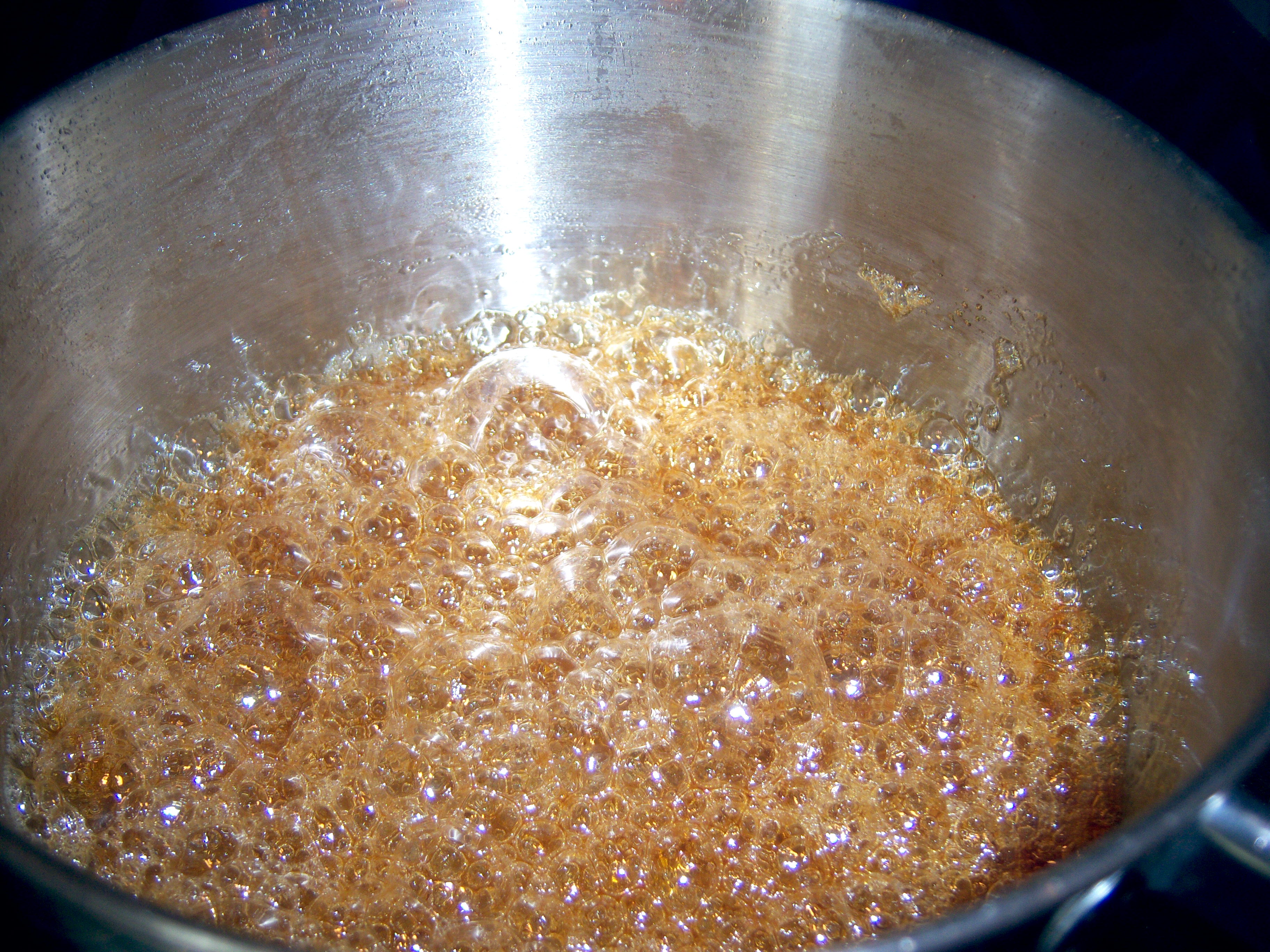 First I cooked the sugar and water. This was simple – and I kept wiping down the sides of the pan with water. It turned the right color. When I poured it in the ramekins, I had the same problem Martha had on the show – it cooled very quickly and I could not get the bottom of each covered evenly.
First I cooked the sugar and water. This was simple – and I kept wiping down the sides of the pan with water. It turned the right color. When I poured it in the ramekins, I had the same problem Martha had on the show – it cooled very quickly and I could not get the bottom of each covered evenly.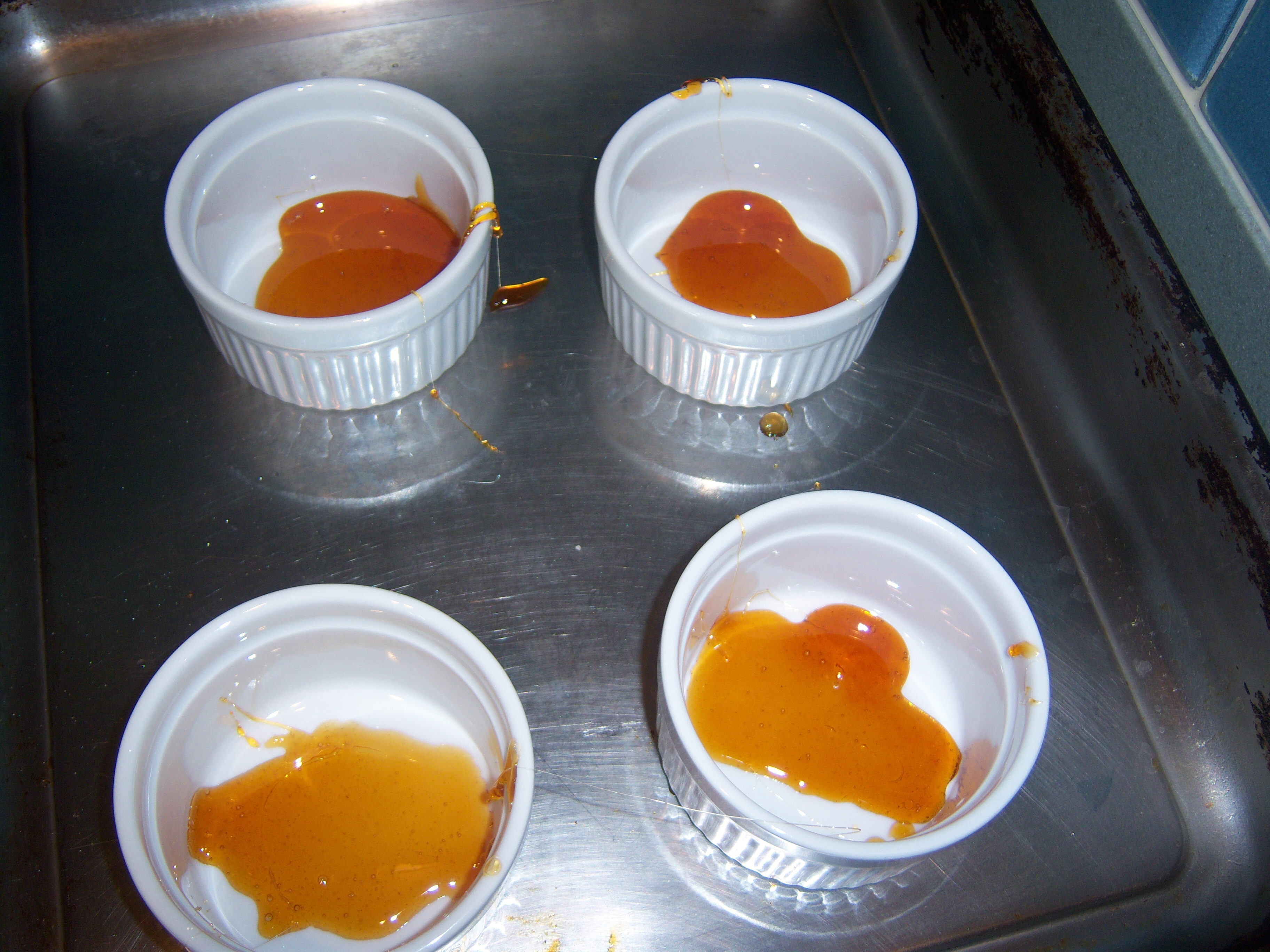
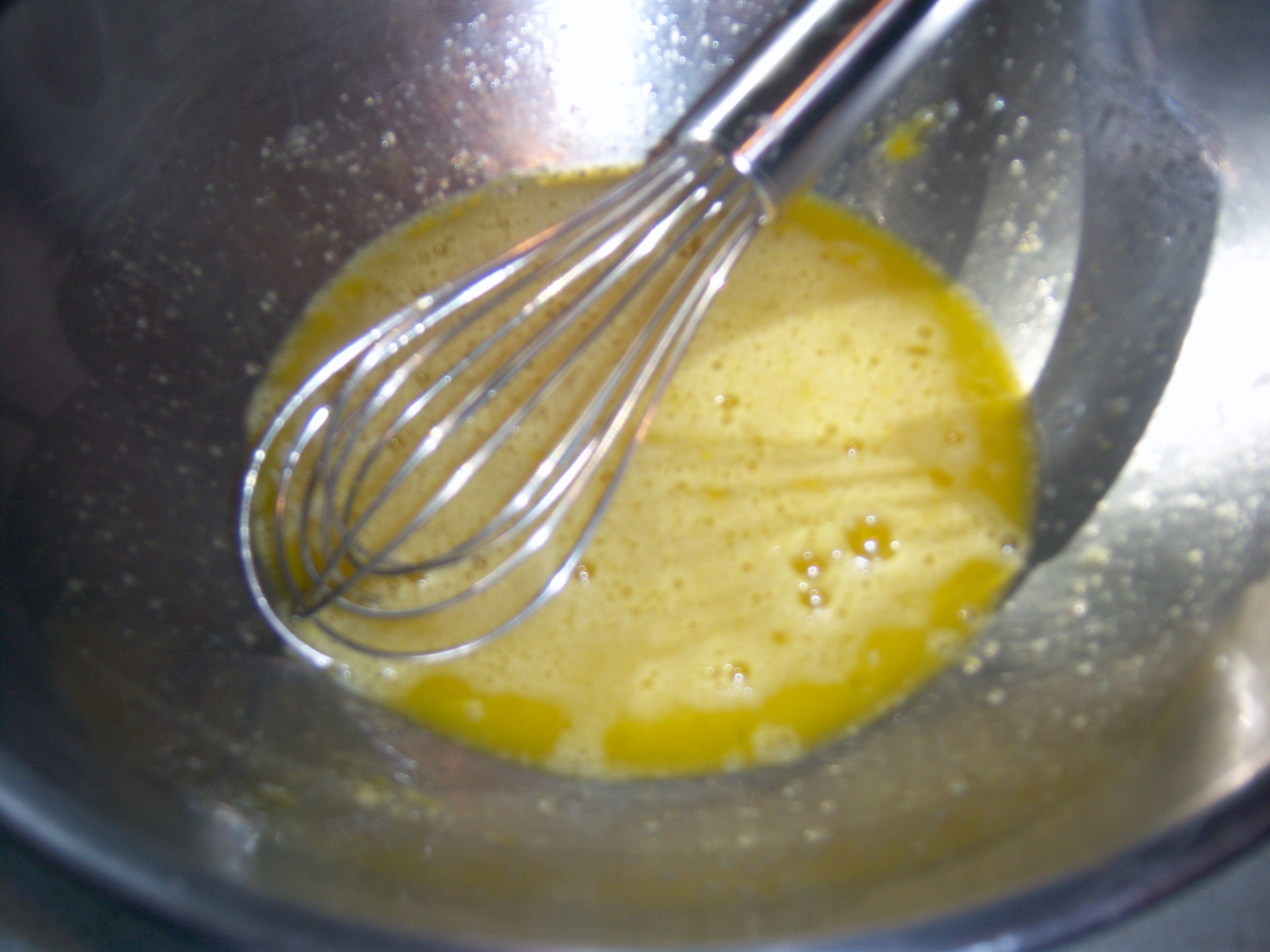 cooked the milk and sugar. I tempered the eggs, then added the rest of the milk. I strained it and poured it into ramekins. I added the water bath and cooked for about 35 minutes. They came out perfectly.
cooked the milk and sugar. I tempered the eggs, then added the rest of the milk. I strained it and poured it into ramekins. I added the water bath and cooked for about 35 minutes. They came out perfectly.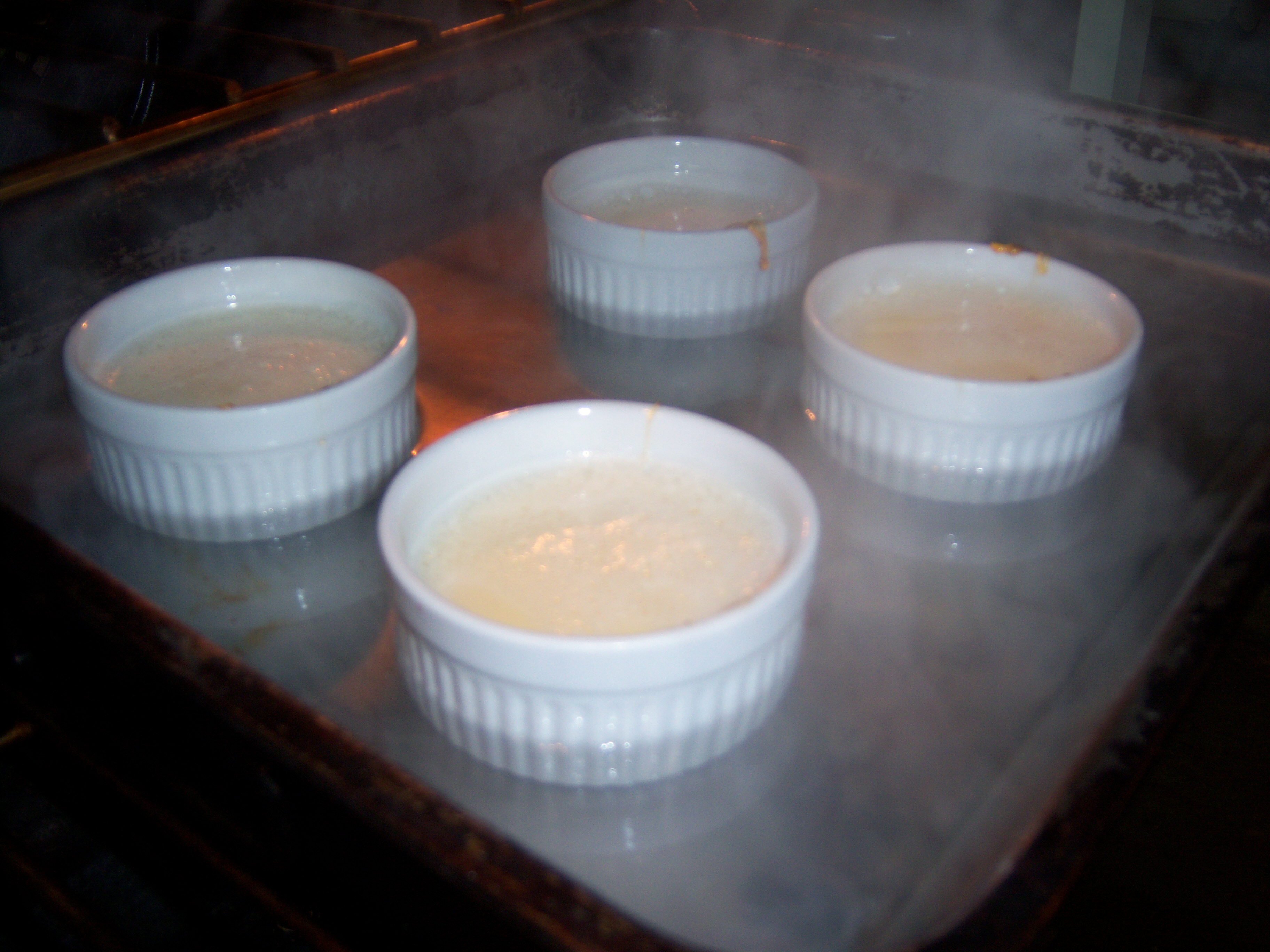 One small problem. Martha says to remove them from the water bath using tongs. They kept slipping out of the tongs and I almost got them wet, which would have been not so wonderful. Mr. MarthaandMe came riding to the rescue and got them out, but did manage to burn himself with the hot water in the process.
One small problem. Martha says to remove them from the water bath using tongs. They kept slipping out of the tongs and I almost got them wet, which would have been not so wonderful. Mr. MarthaandMe came riding to the rescue and got them out, but did manage to burn himself with the hot water in the process.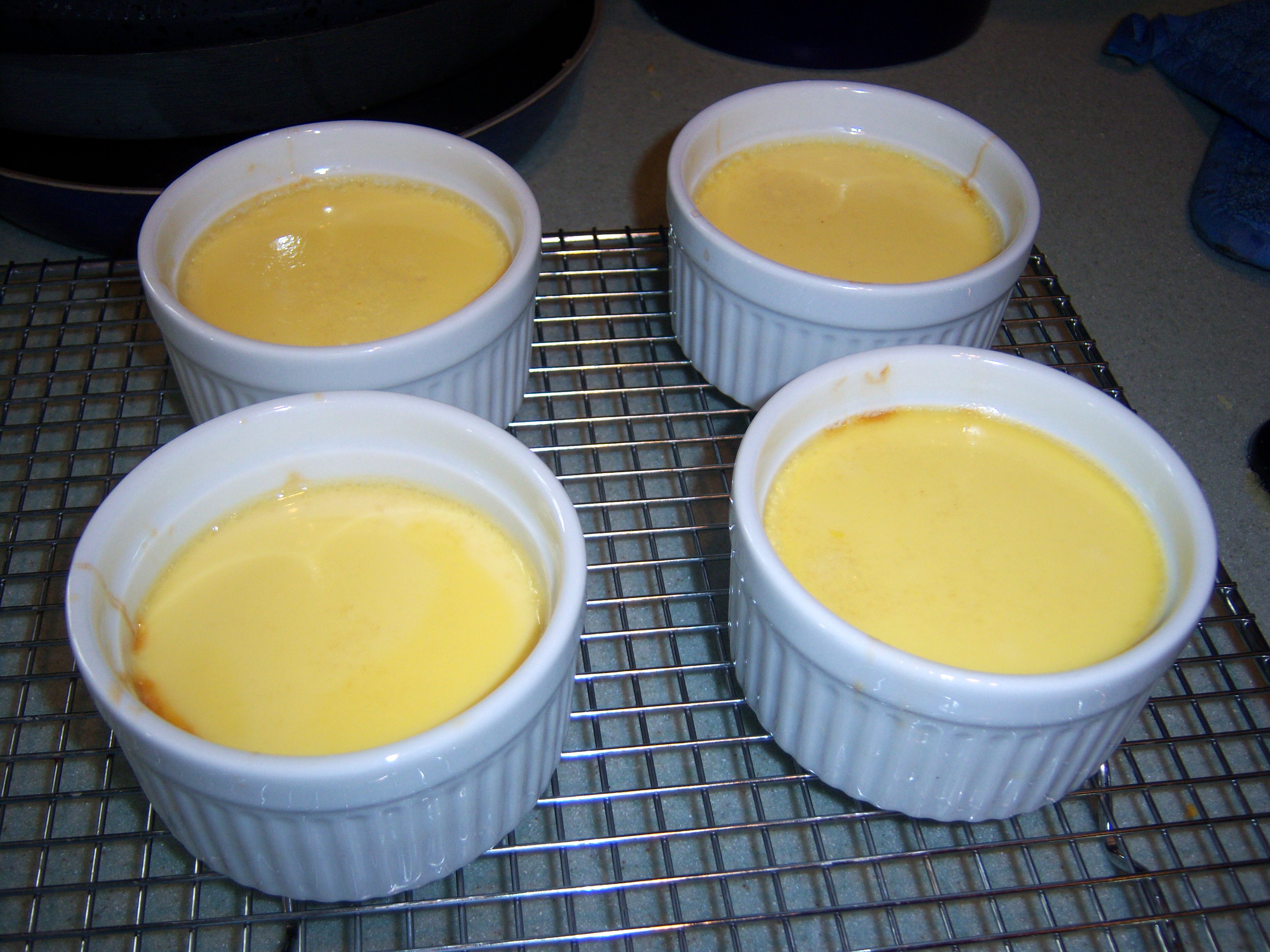
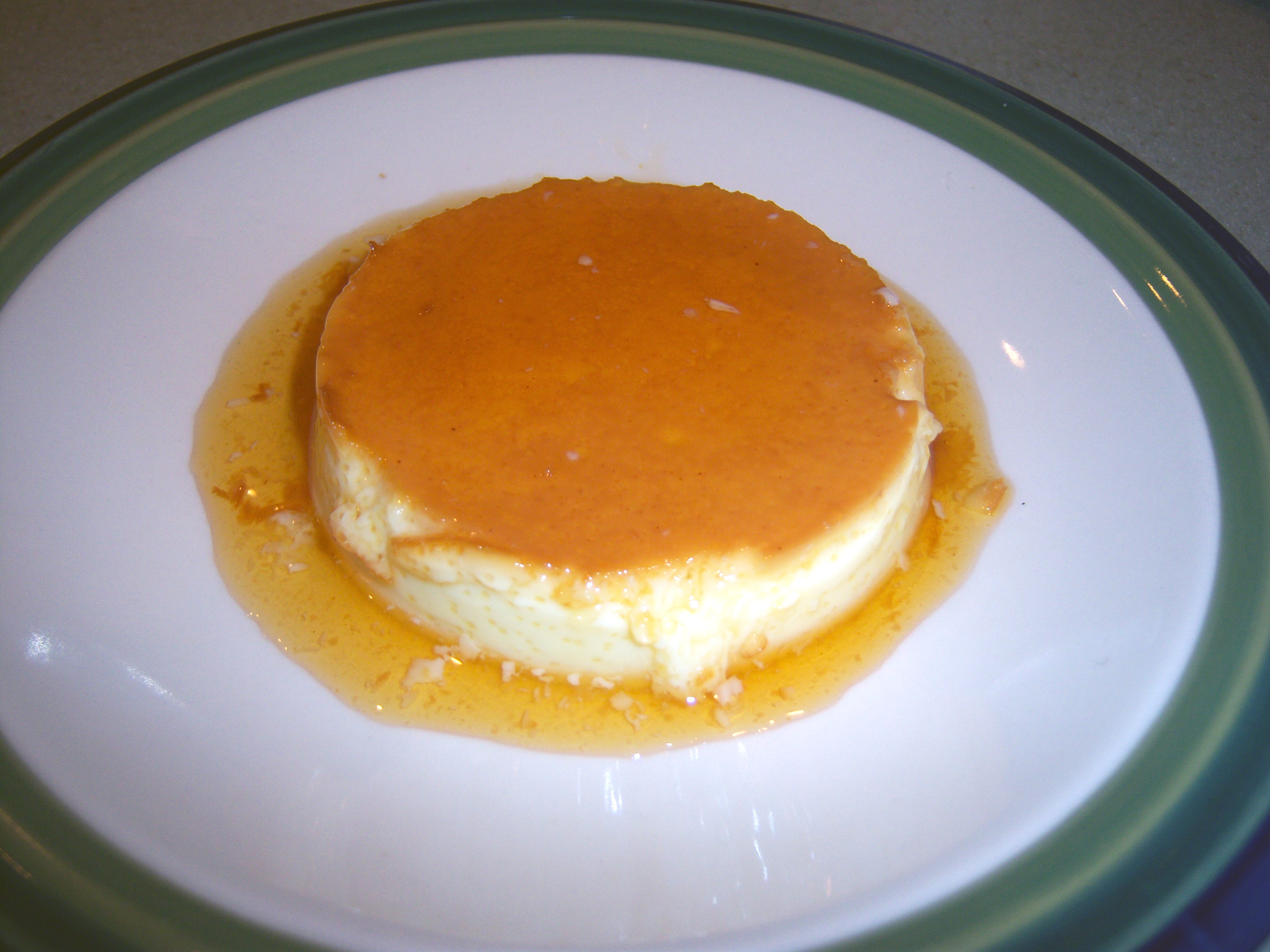 horrendous, so they all got dumped down the drain. So much for flan.
horrendous, so they all got dumped down the drain. So much for flan.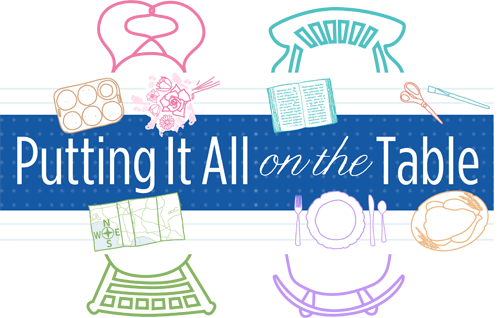

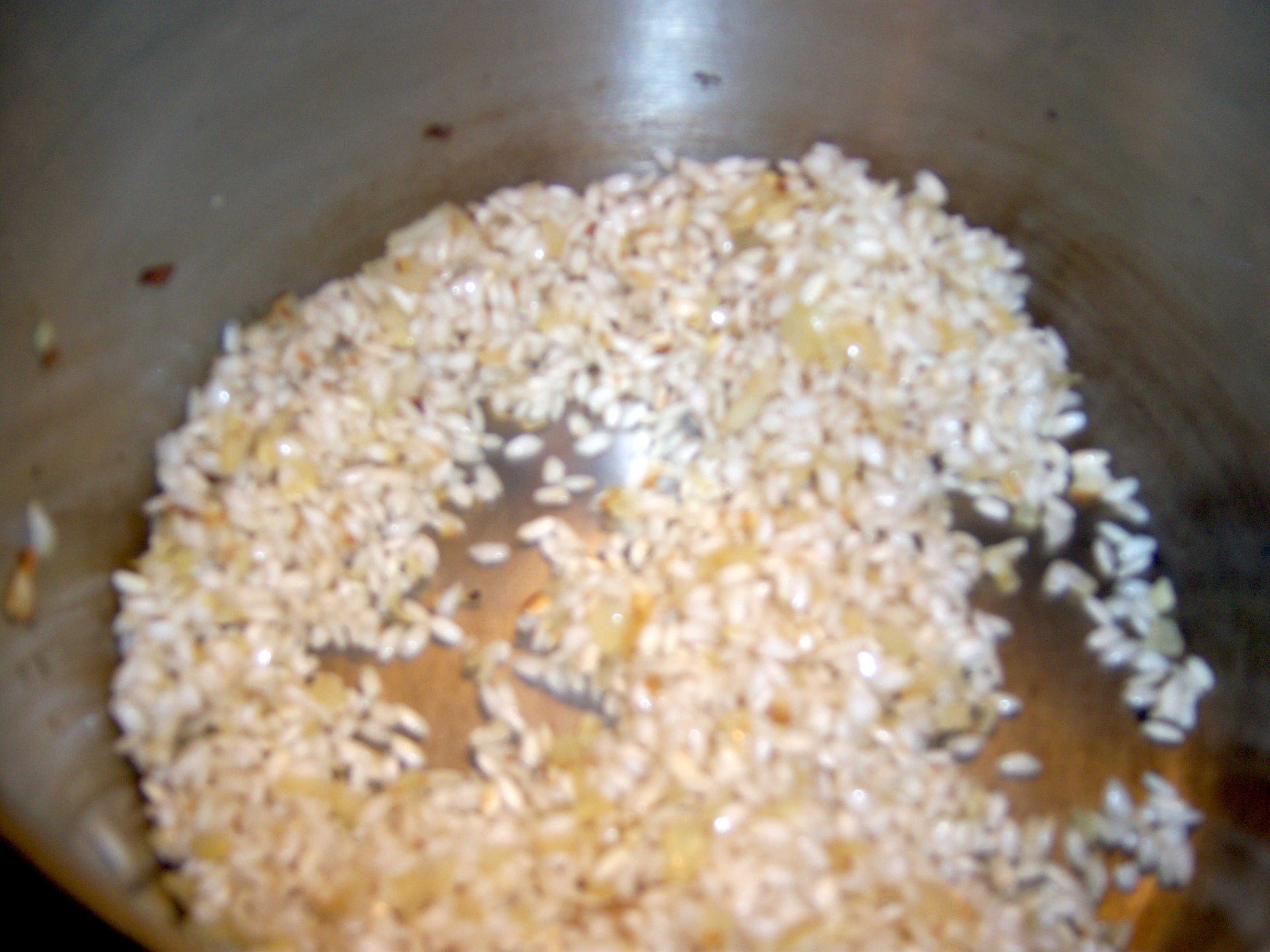 Then you gradually add the broth and stir until your arm falls off. I admit I do not stand there and stir constantly. I will dump in some broth, mix it up and work on something else and come back to it. I also do not use 100% broth. I like to use some water. I think it can be almost too rich if you use just broth.
Then you gradually add the broth and stir until your arm falls off. I admit I do not stand there and stir constantly. I will dump in some broth, mix it up and work on something else and come back to it. I also do not use 100% broth. I like to use some water. I think it can be almost too rich if you use just broth.












